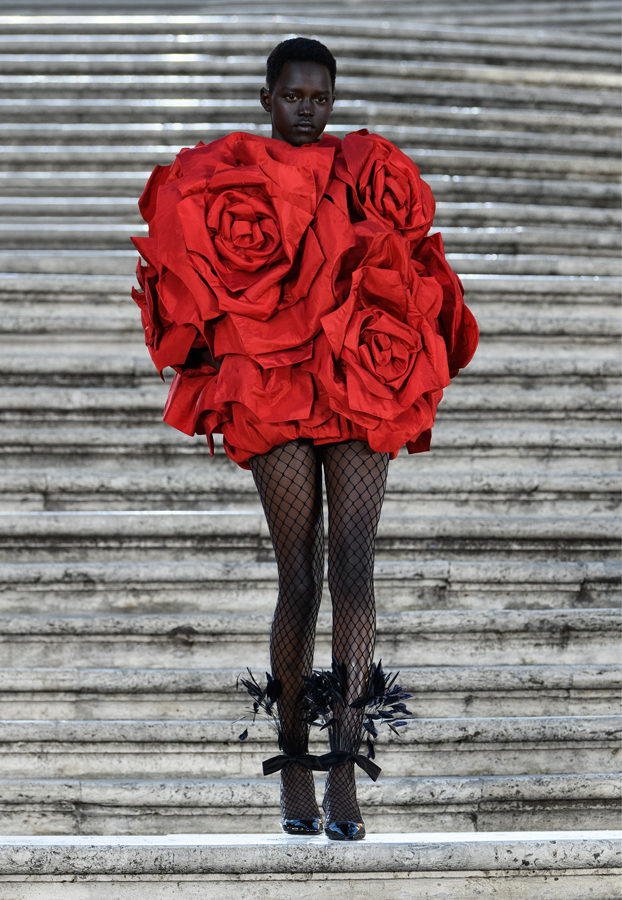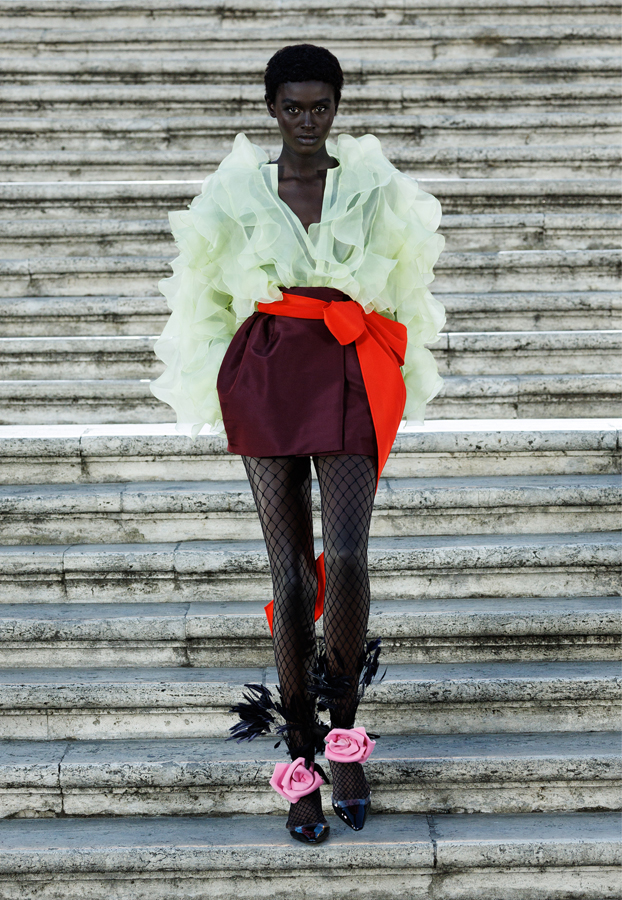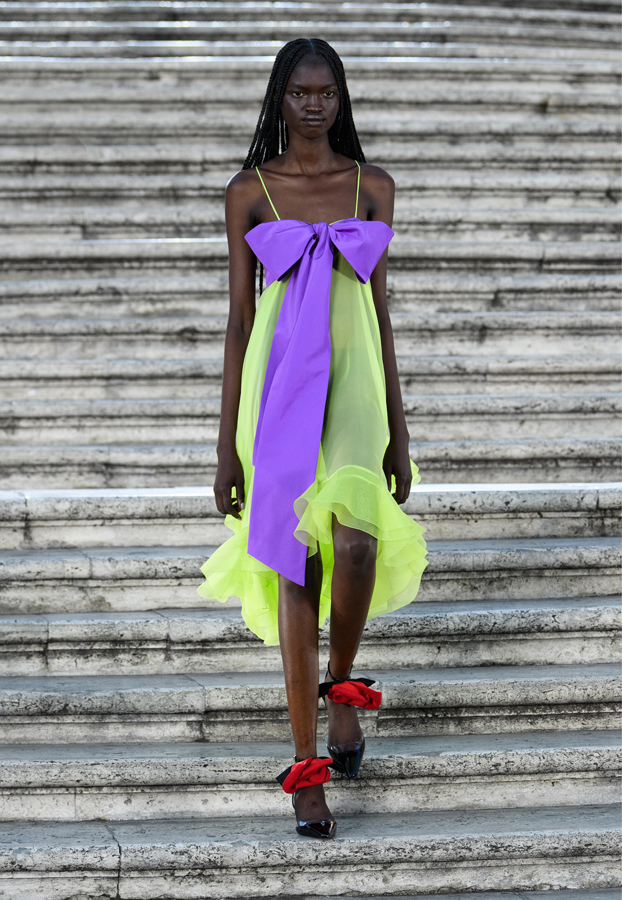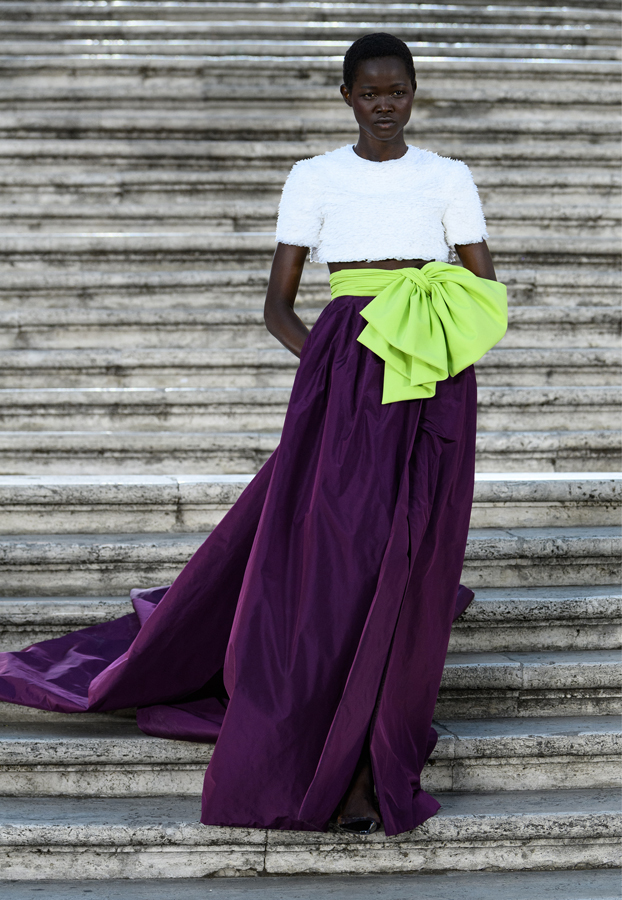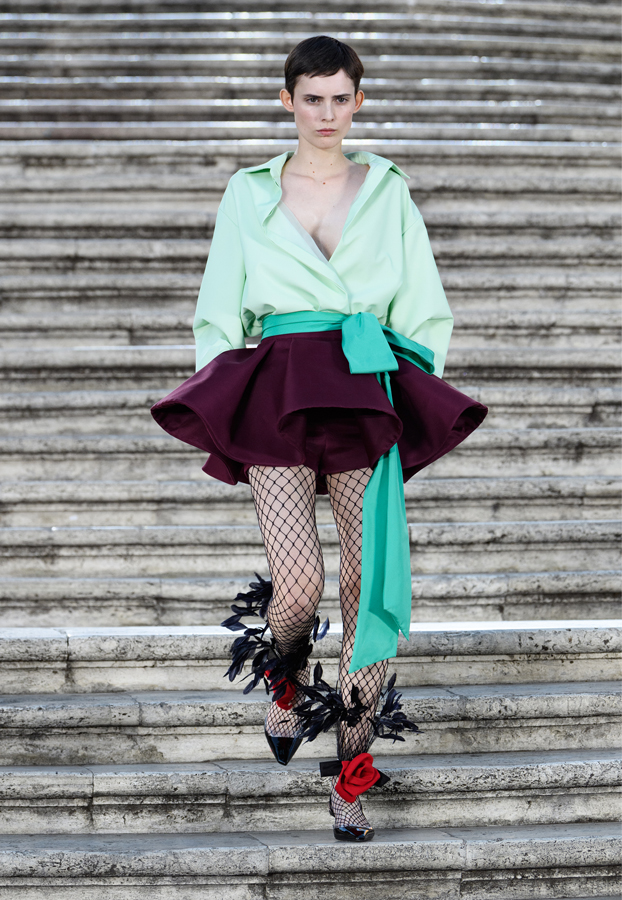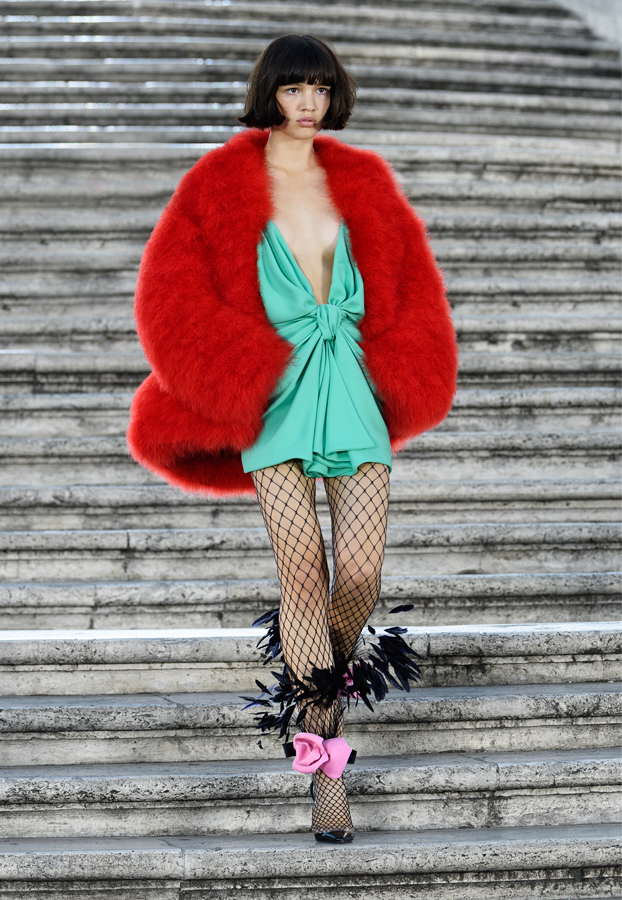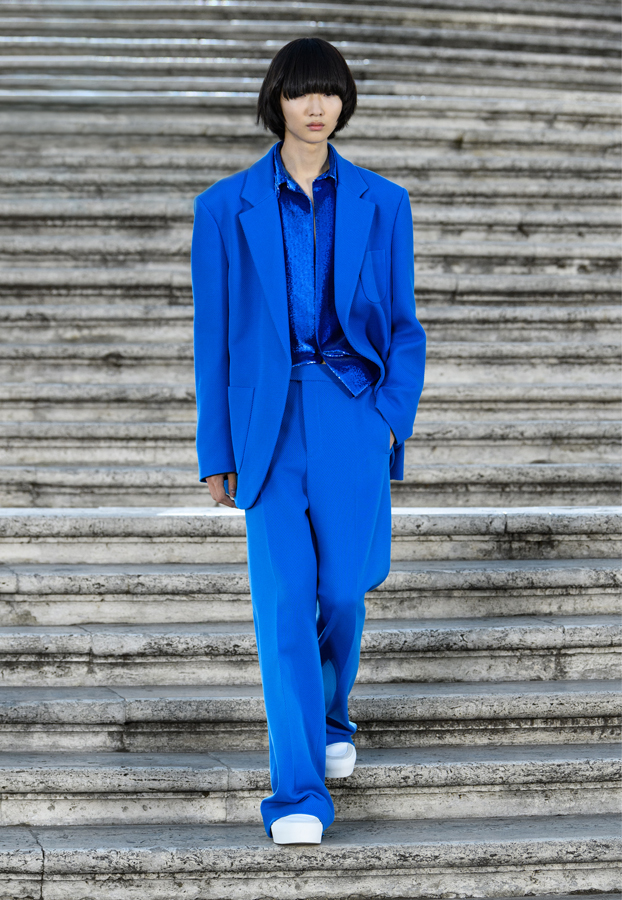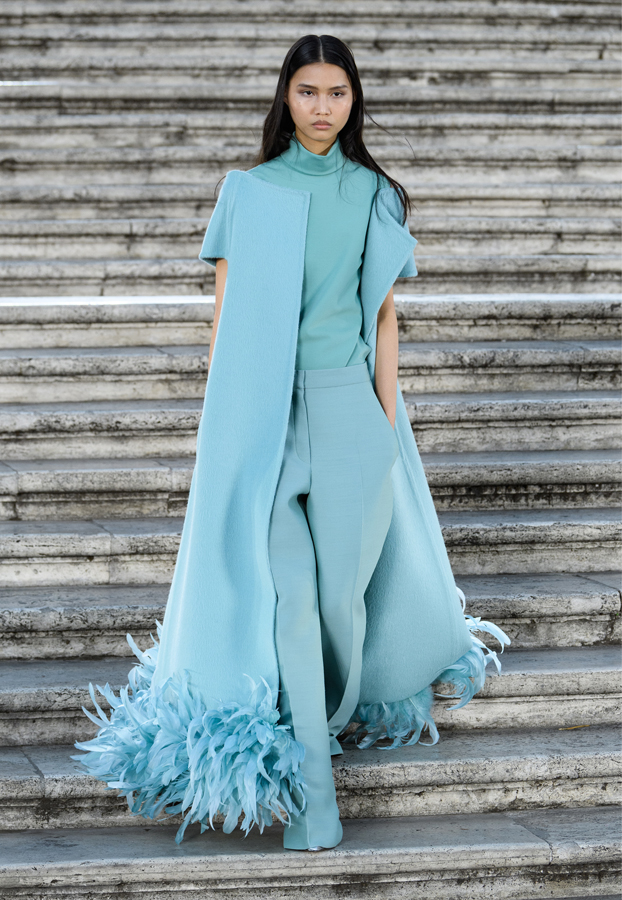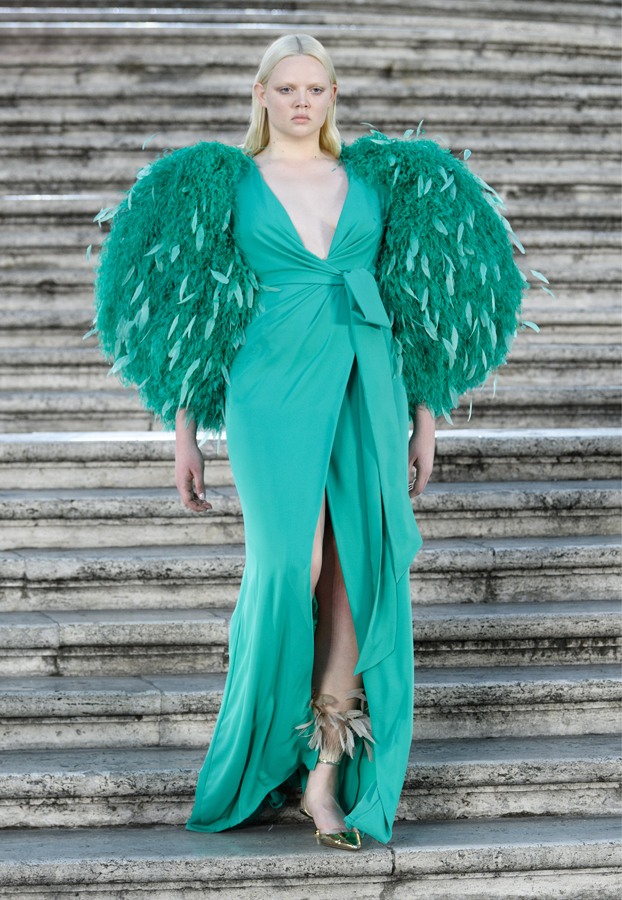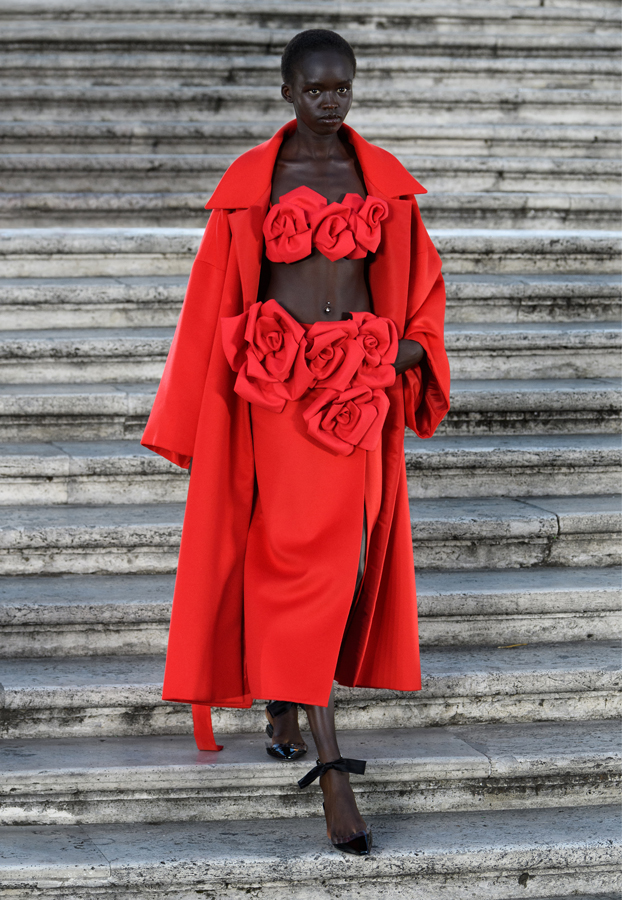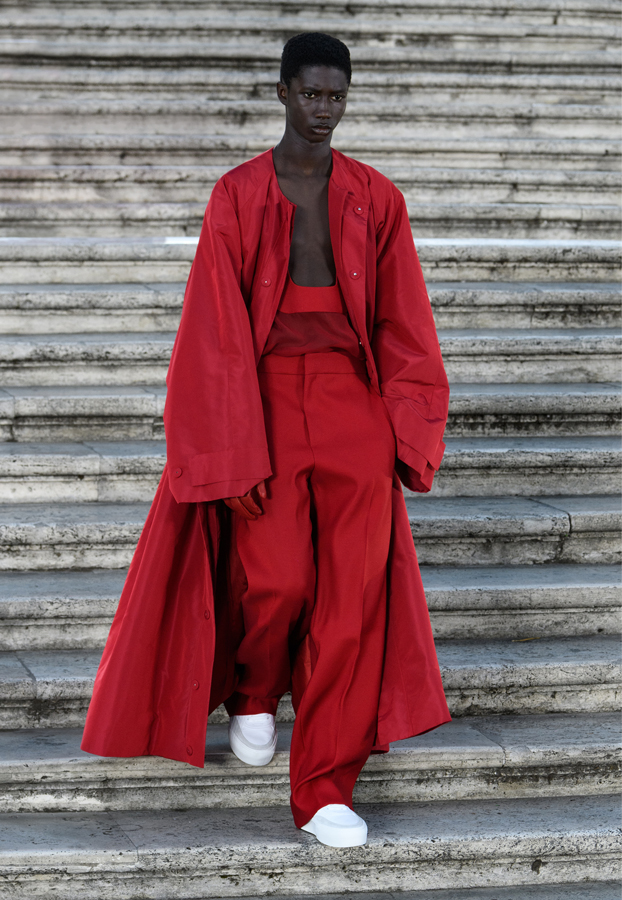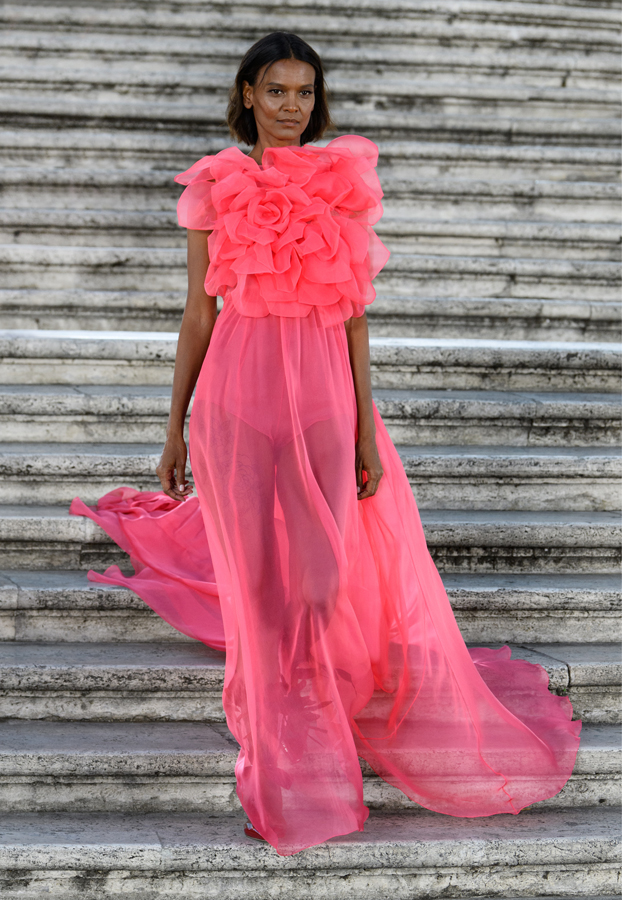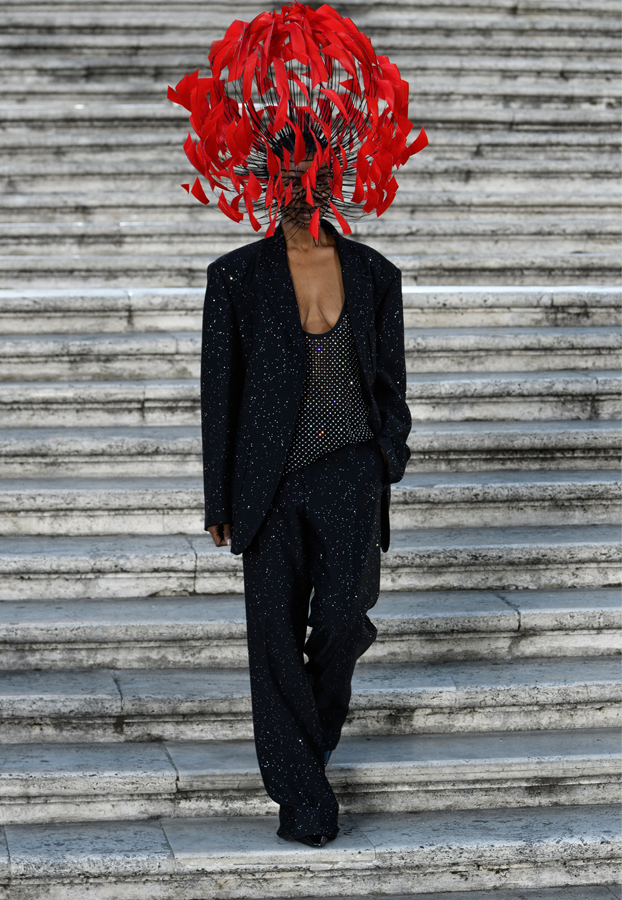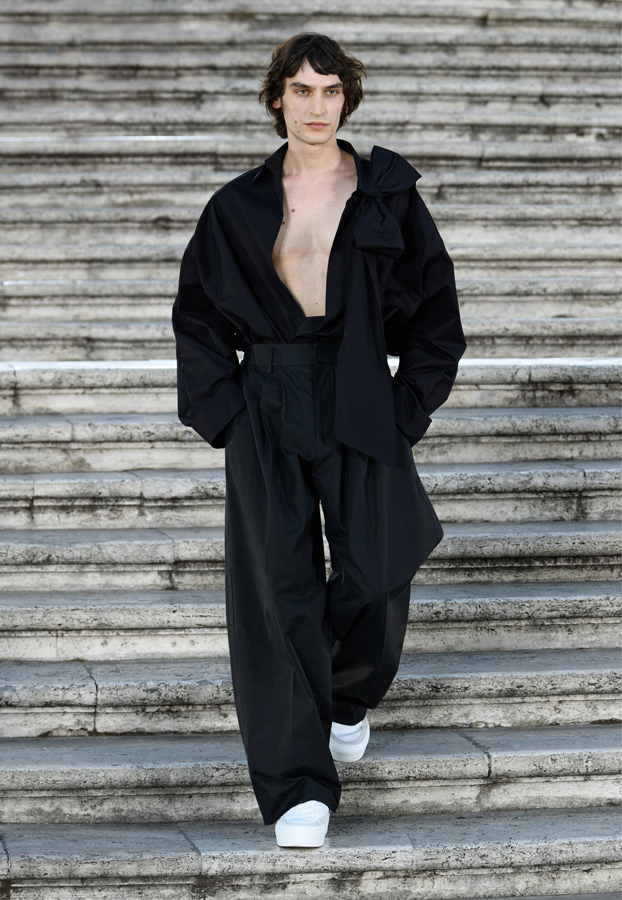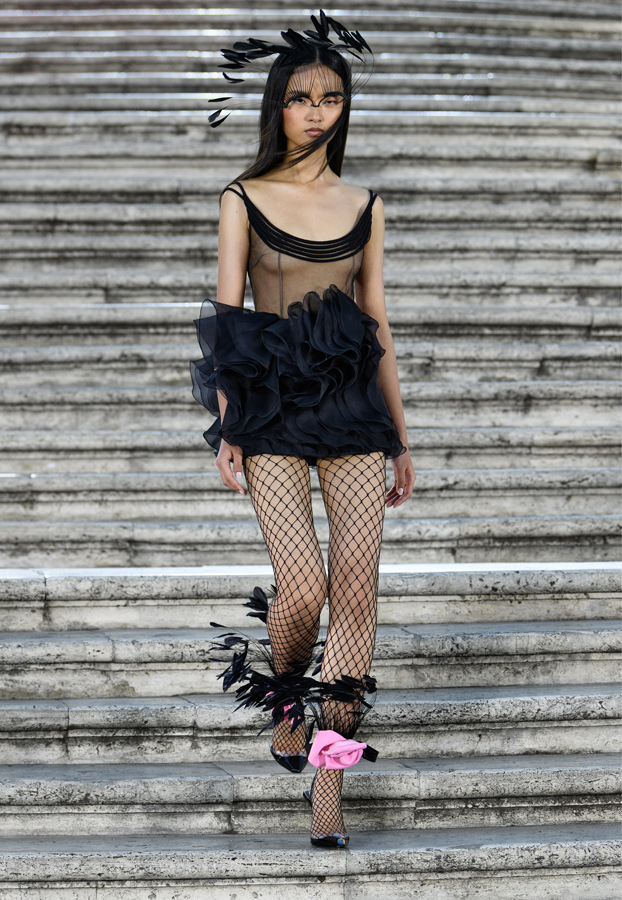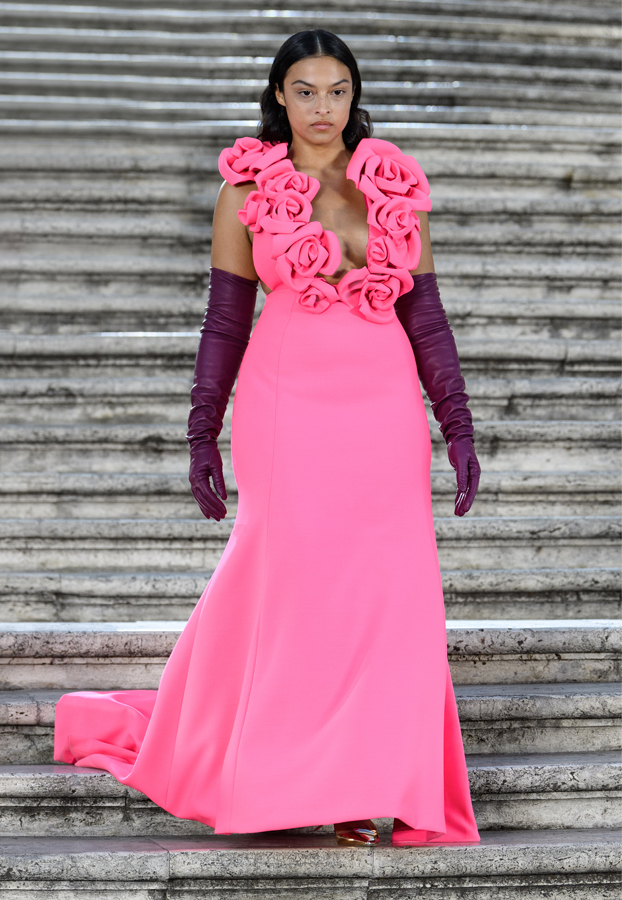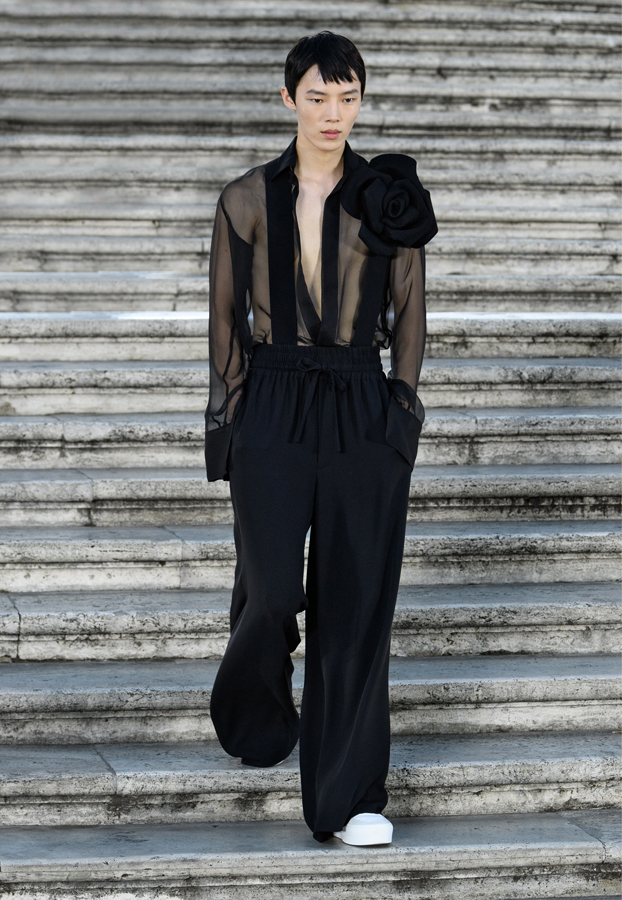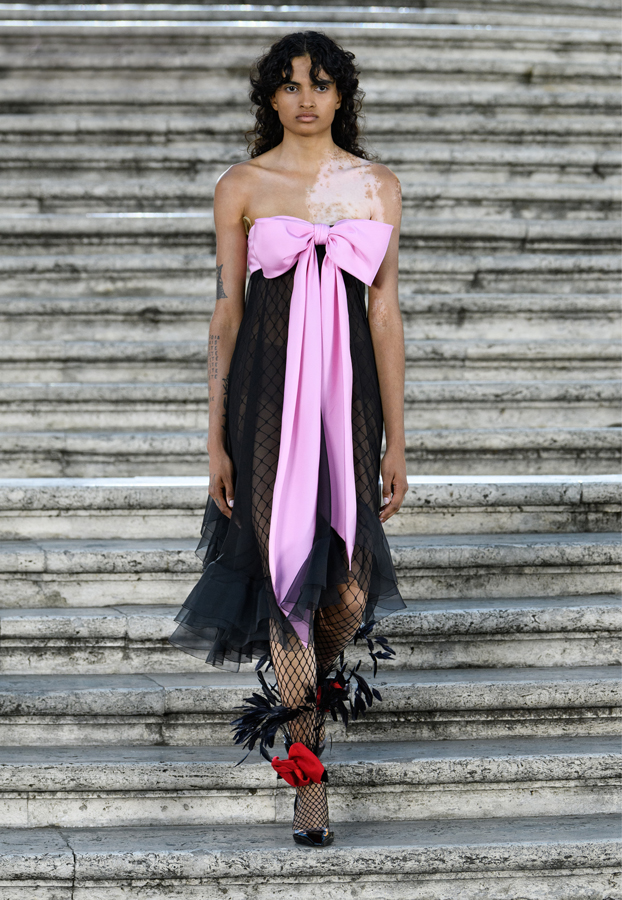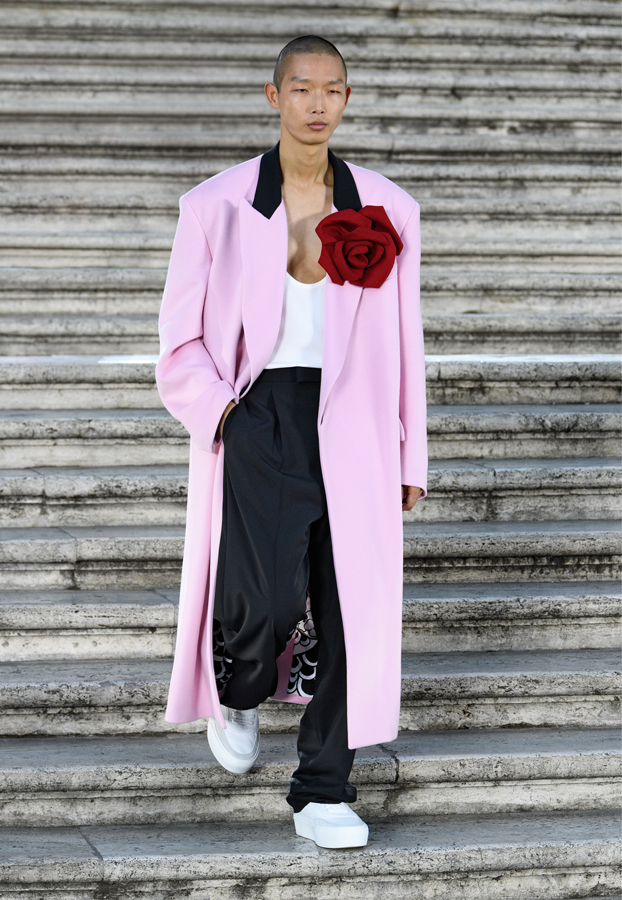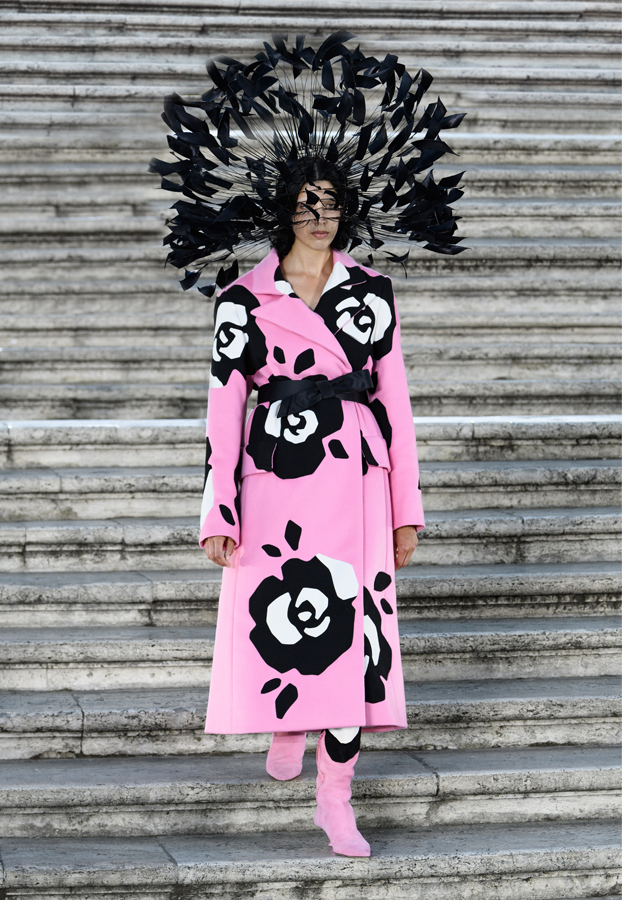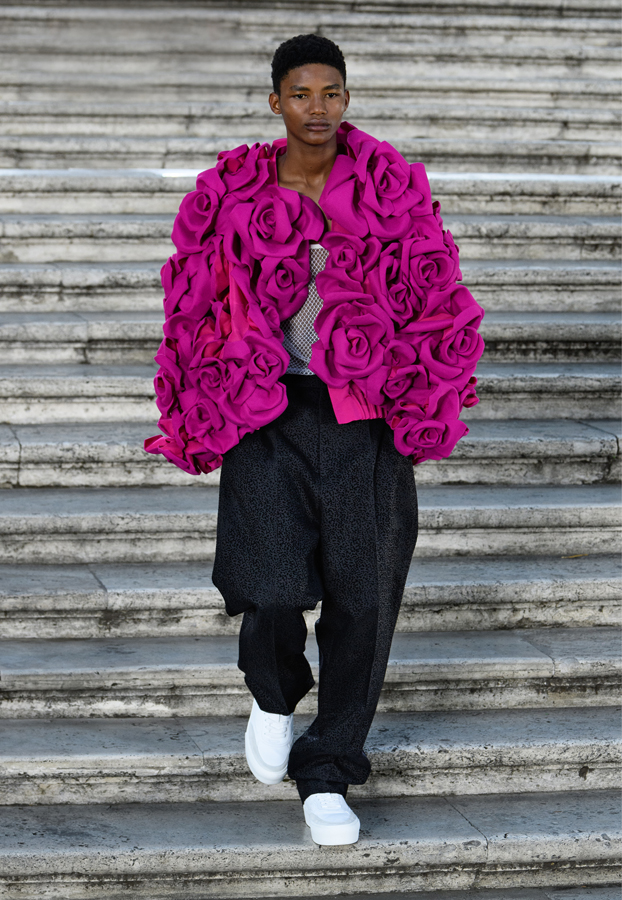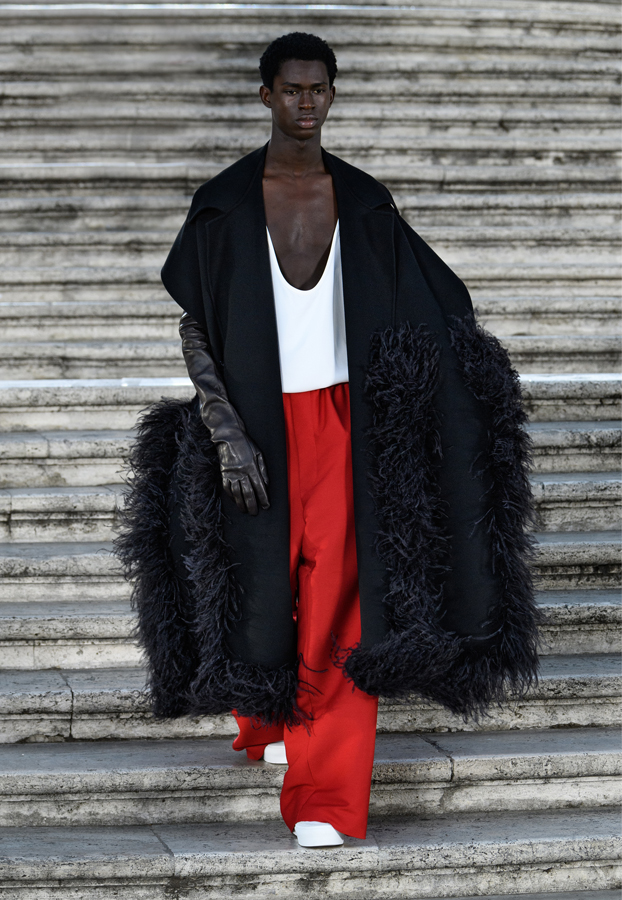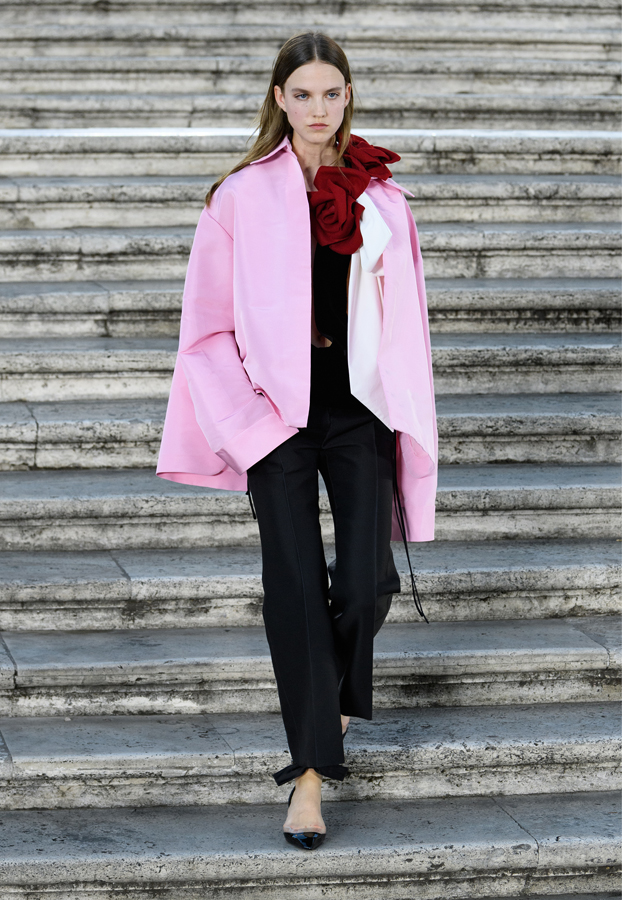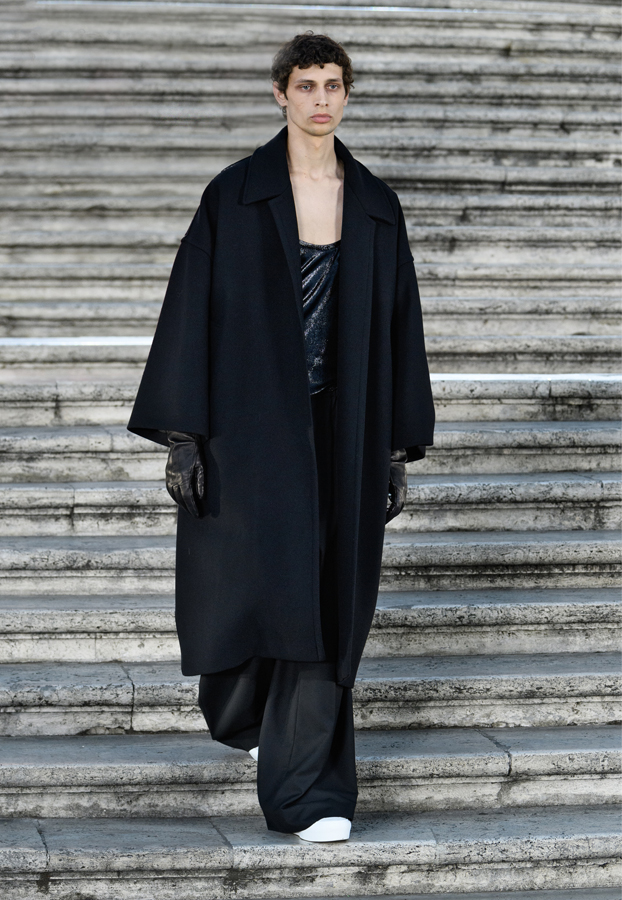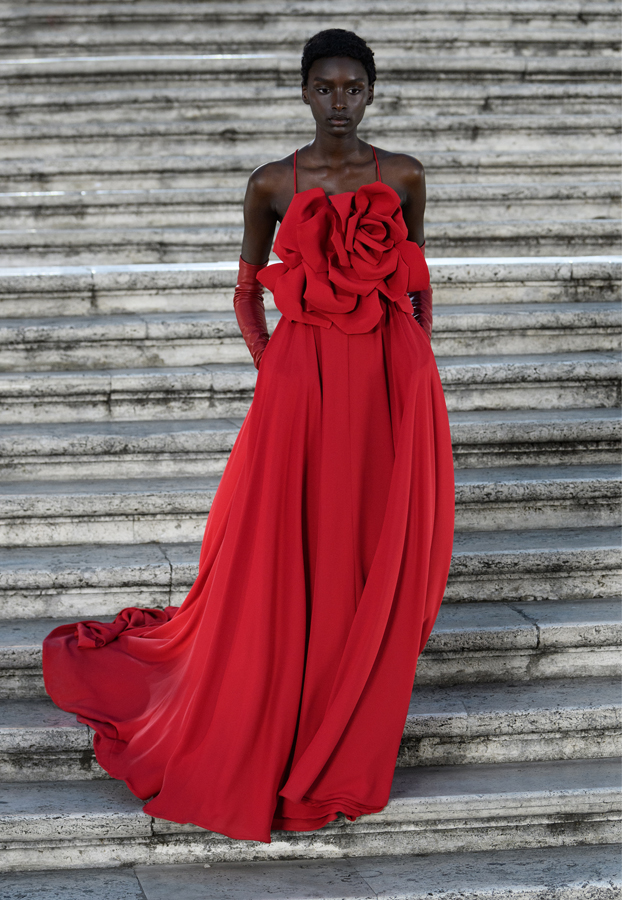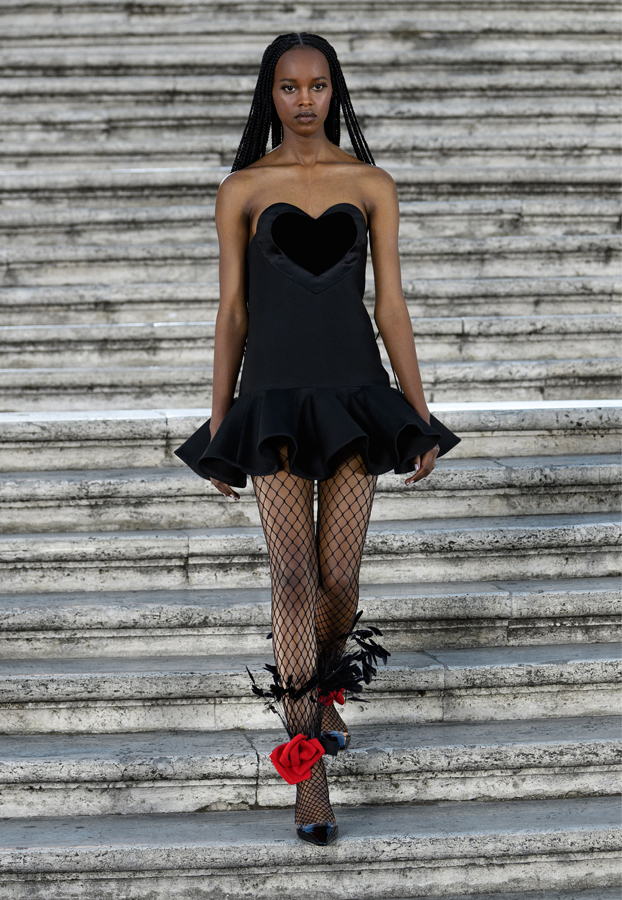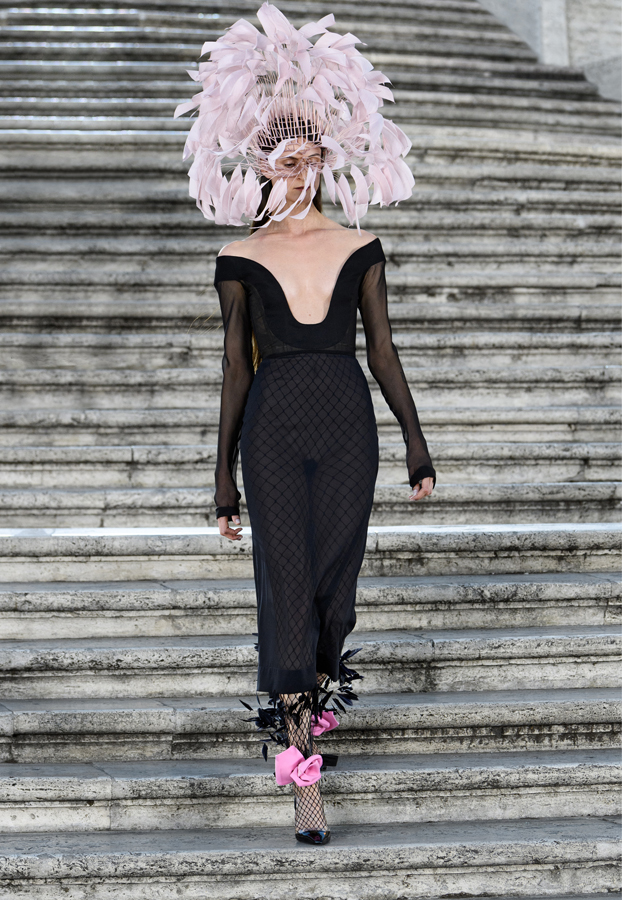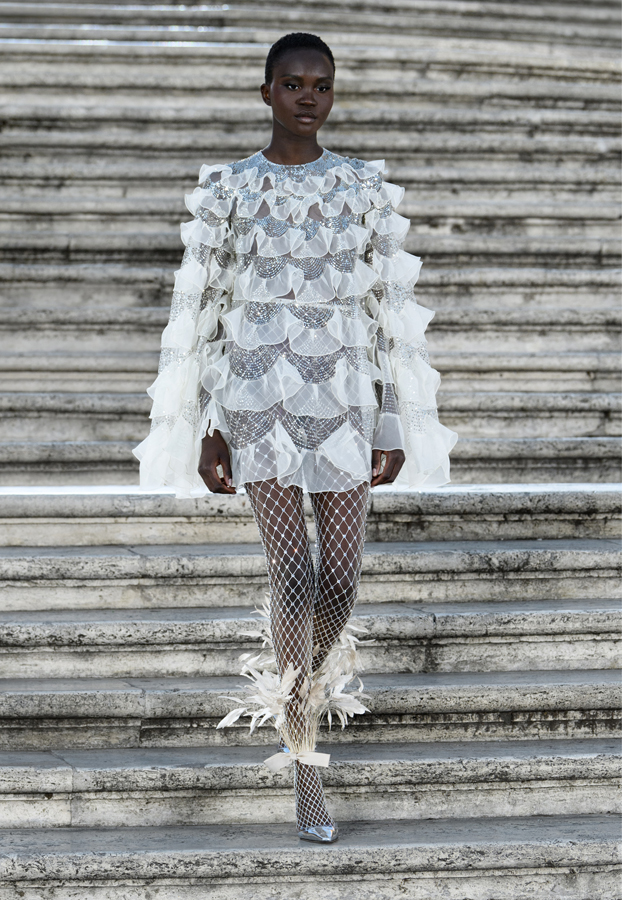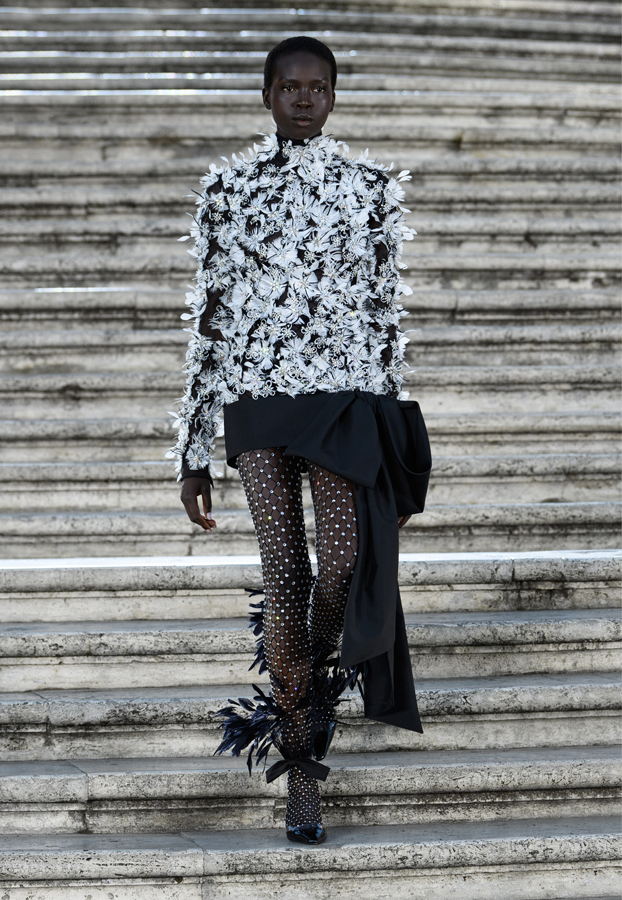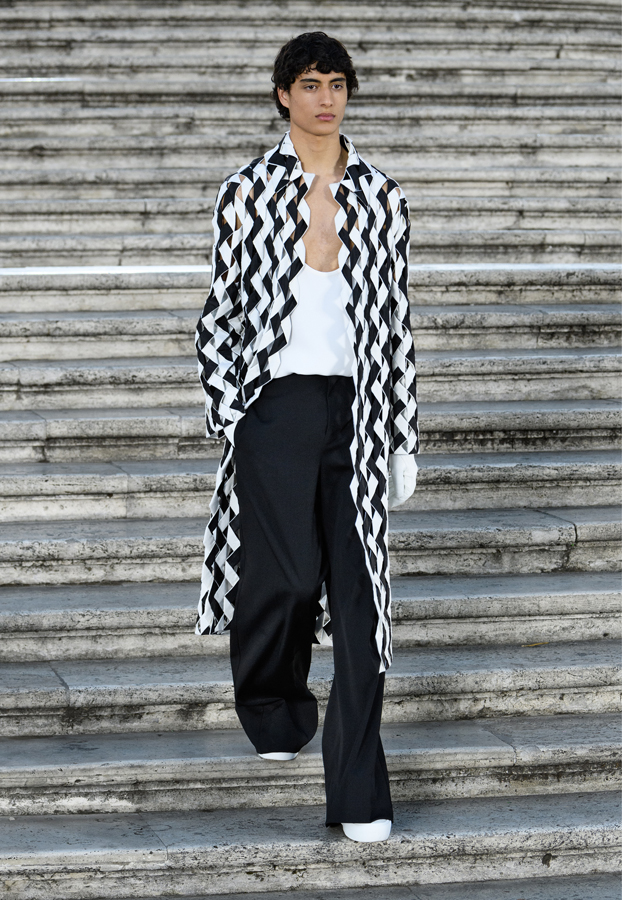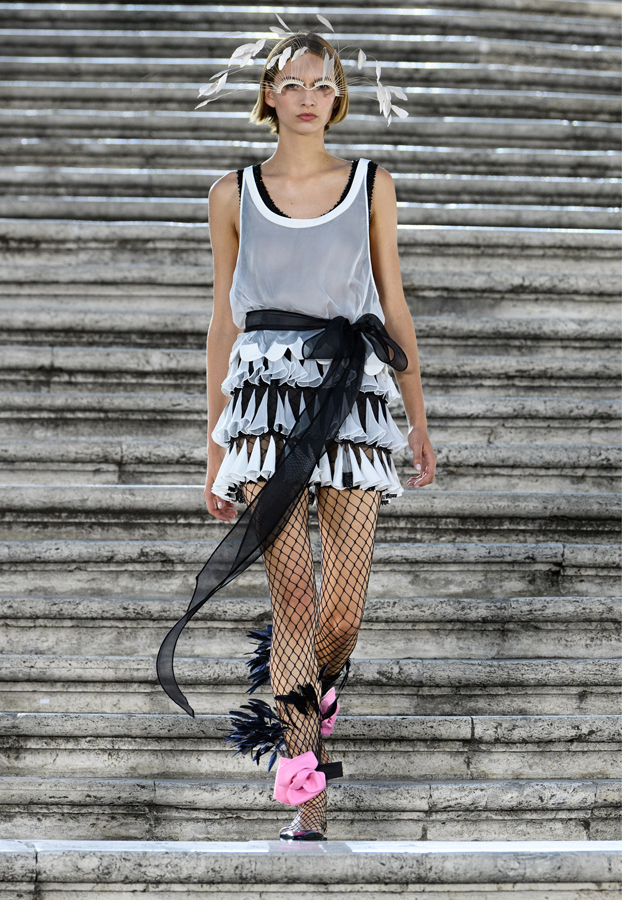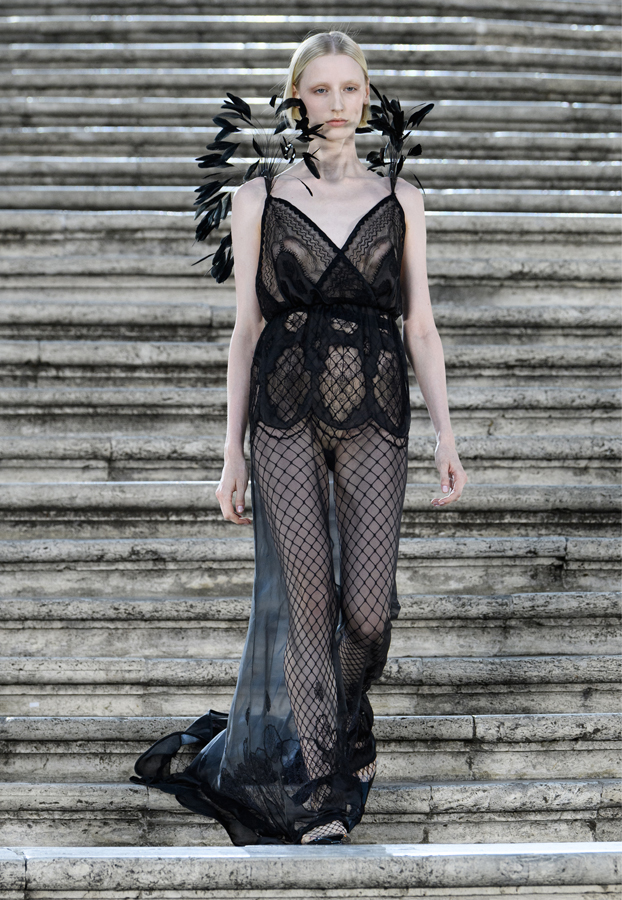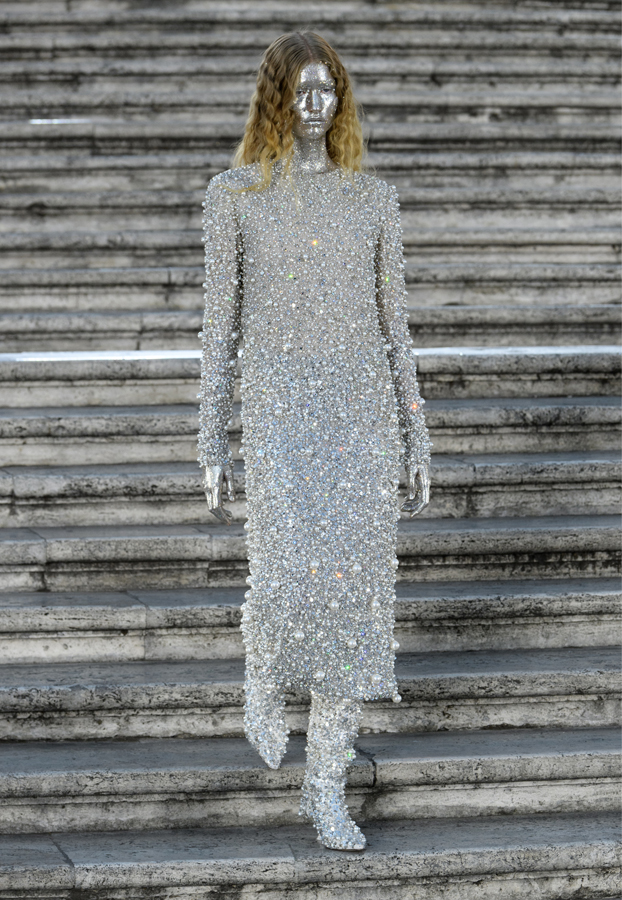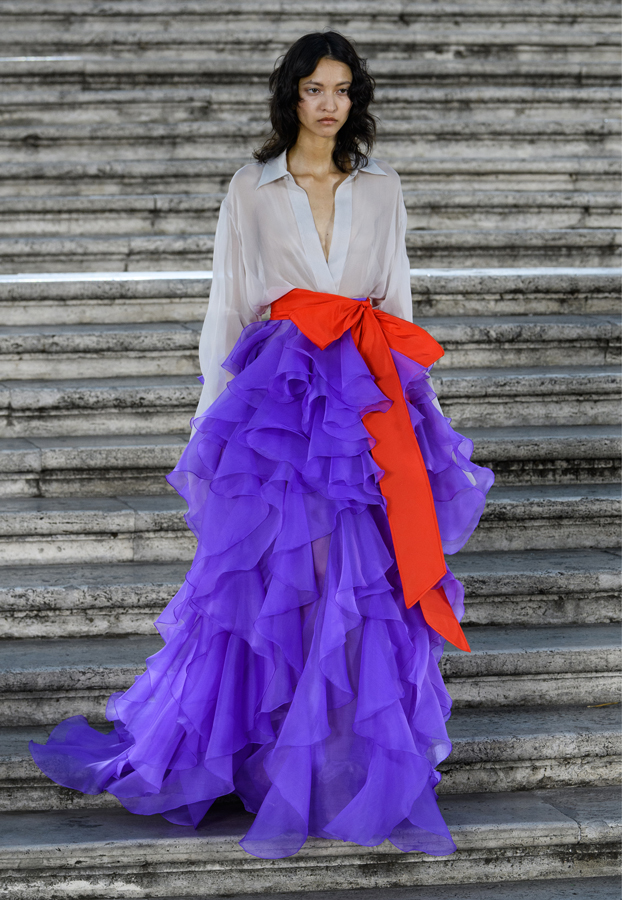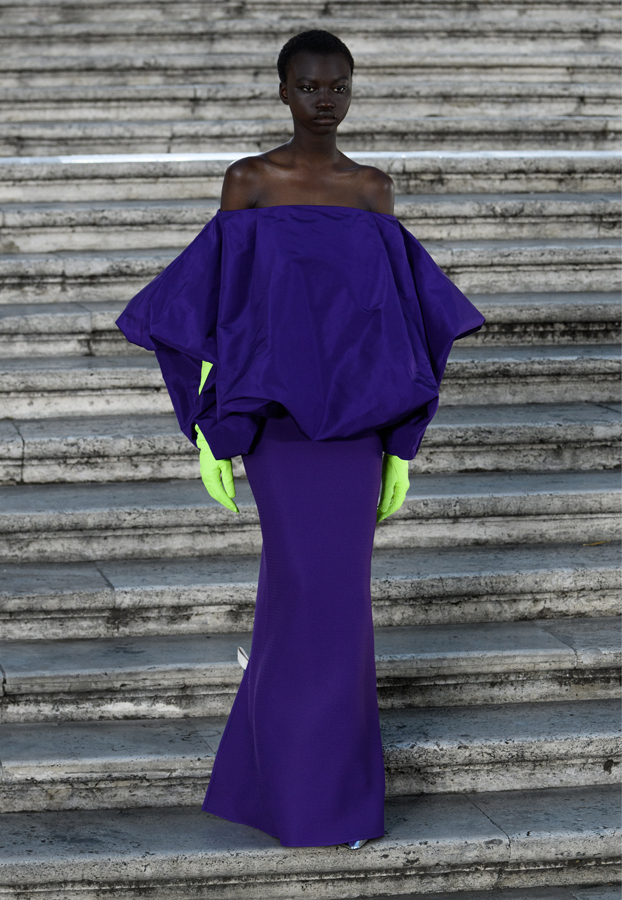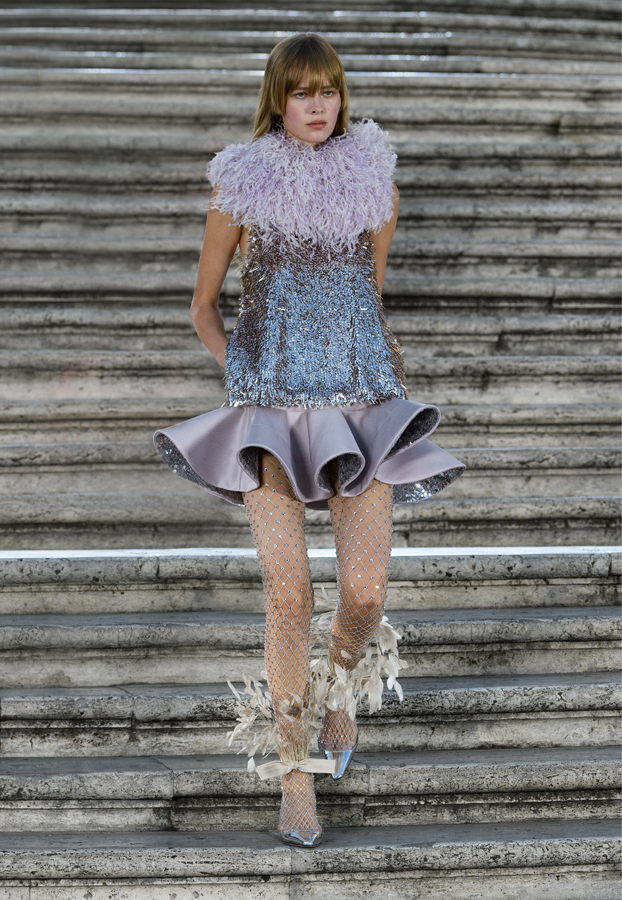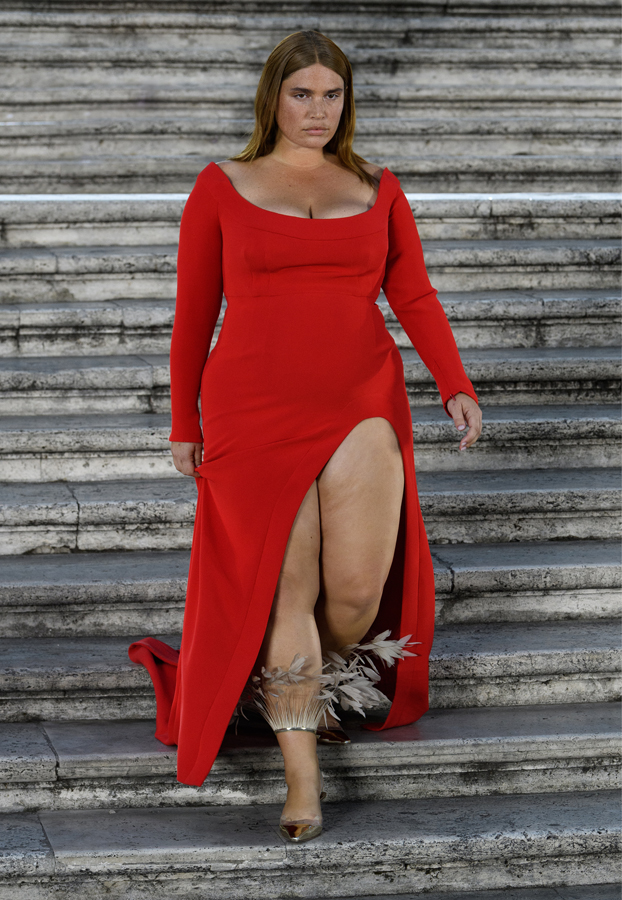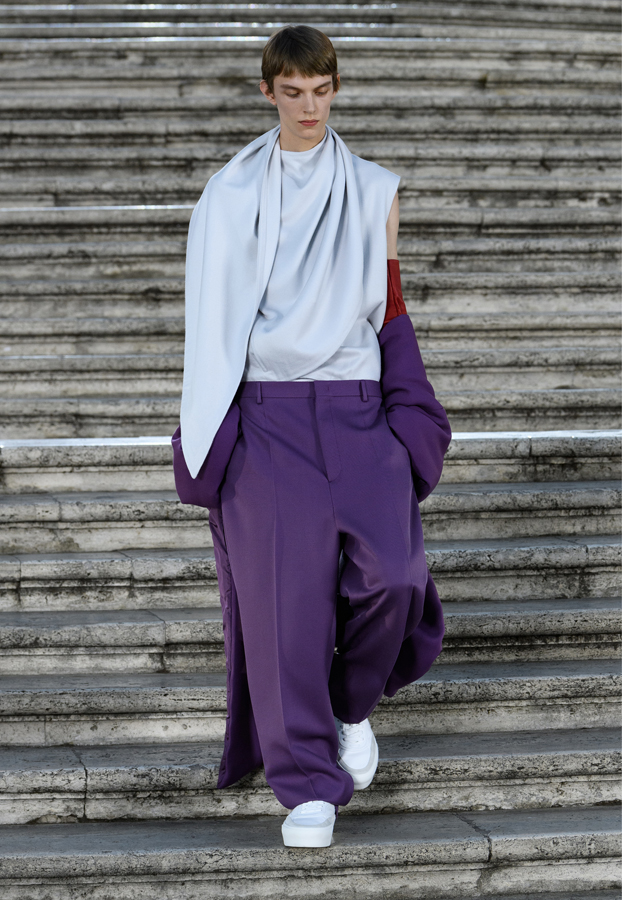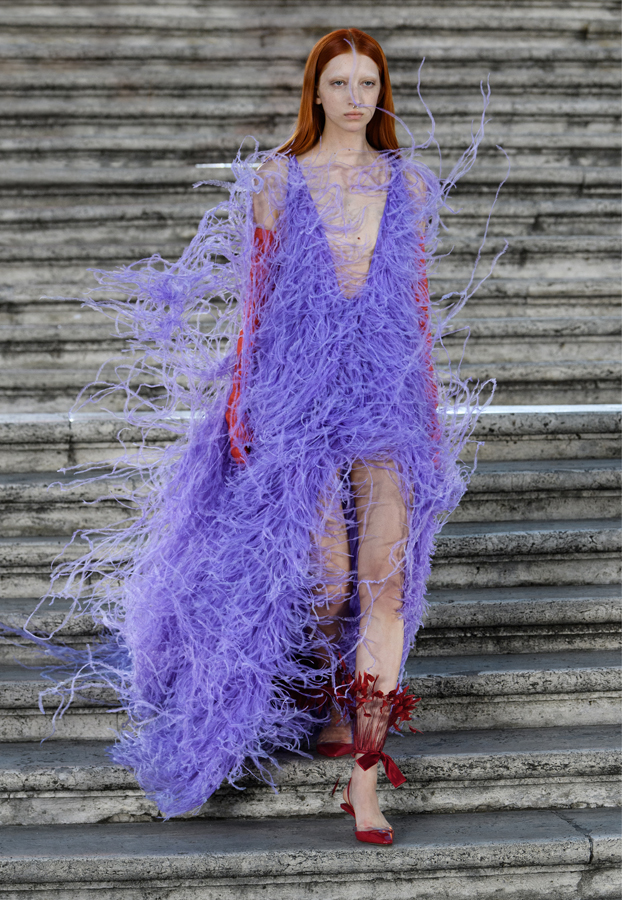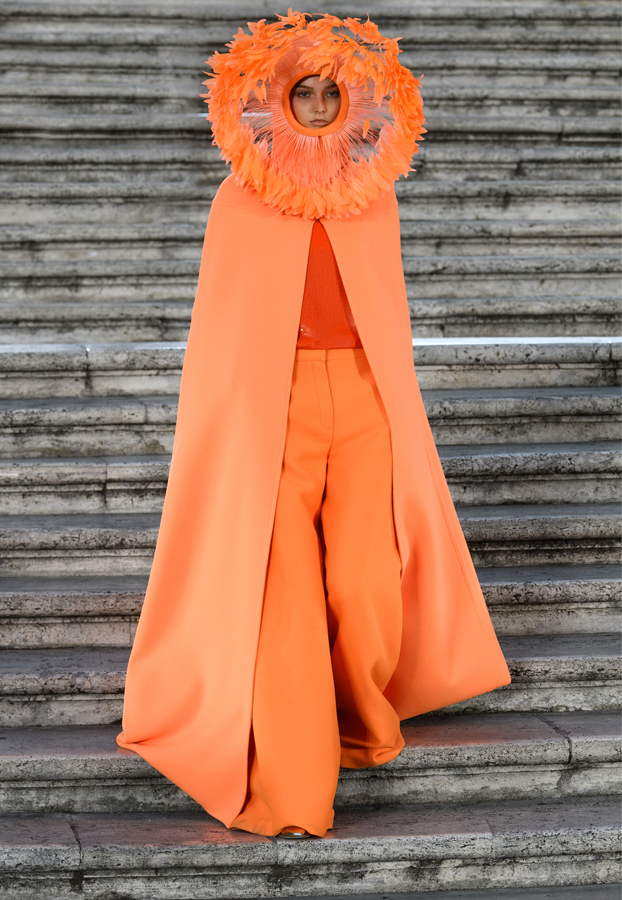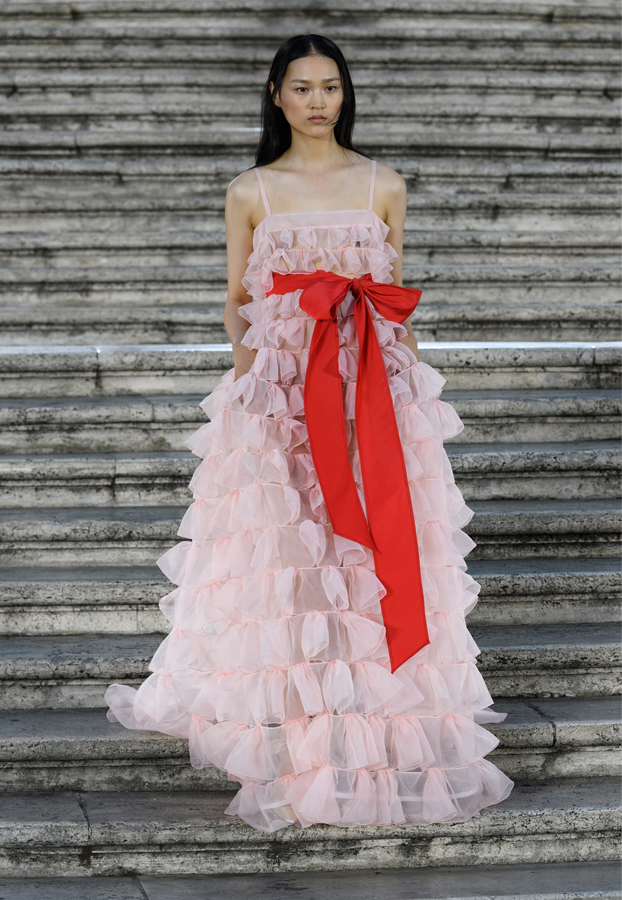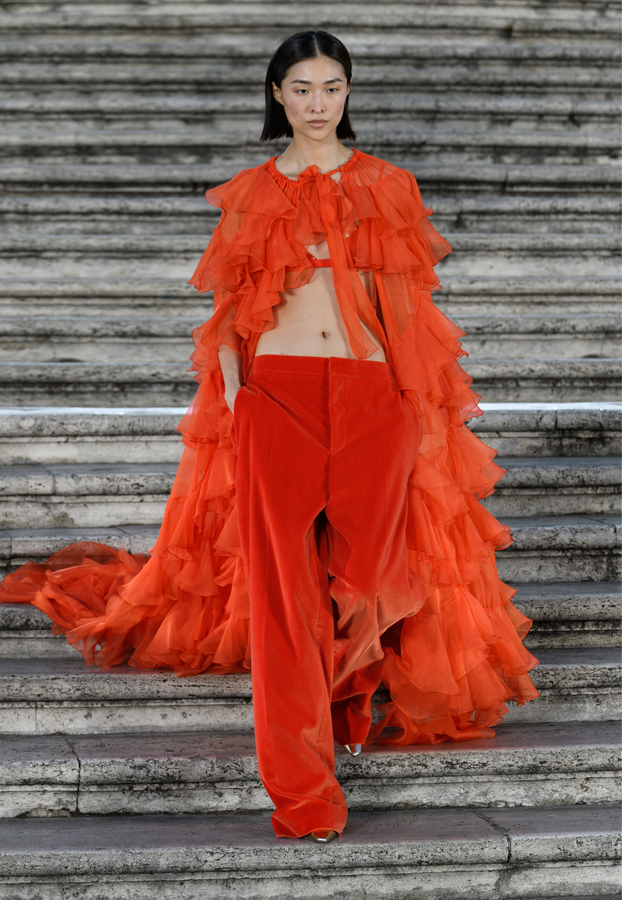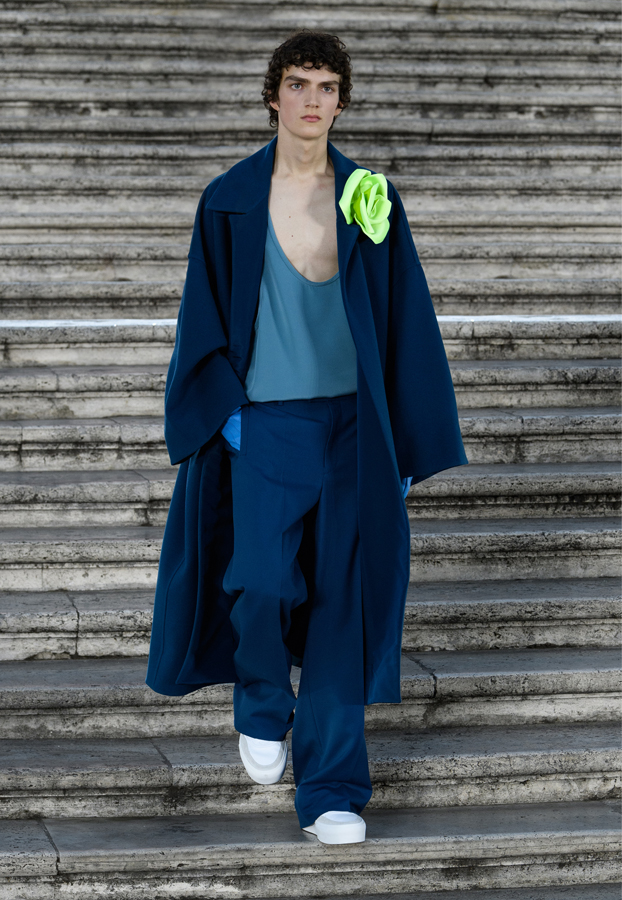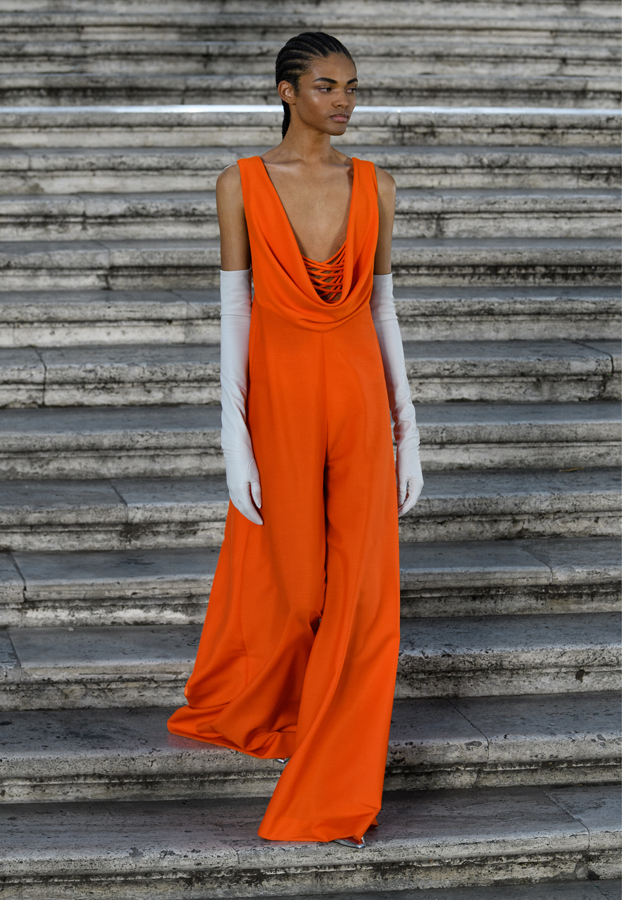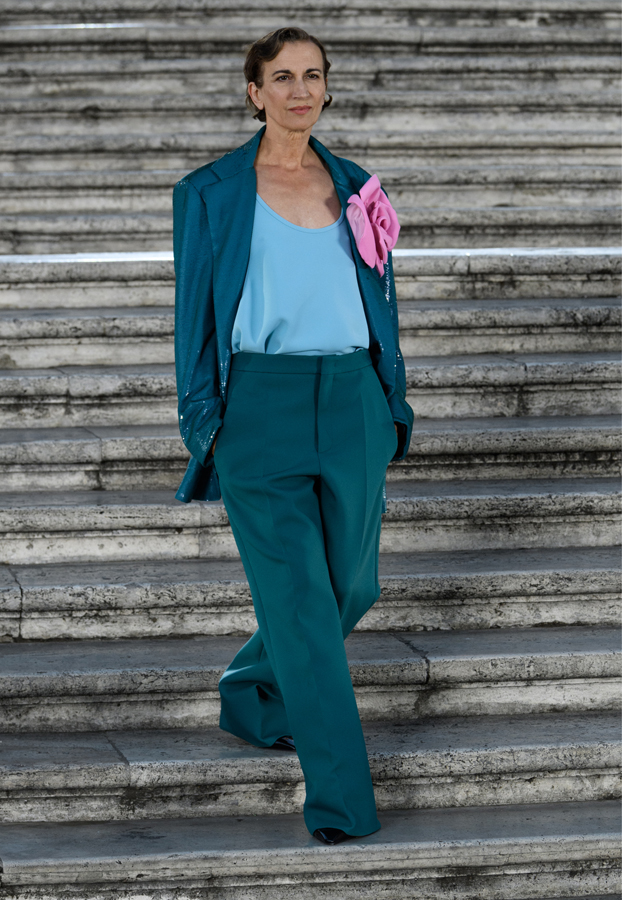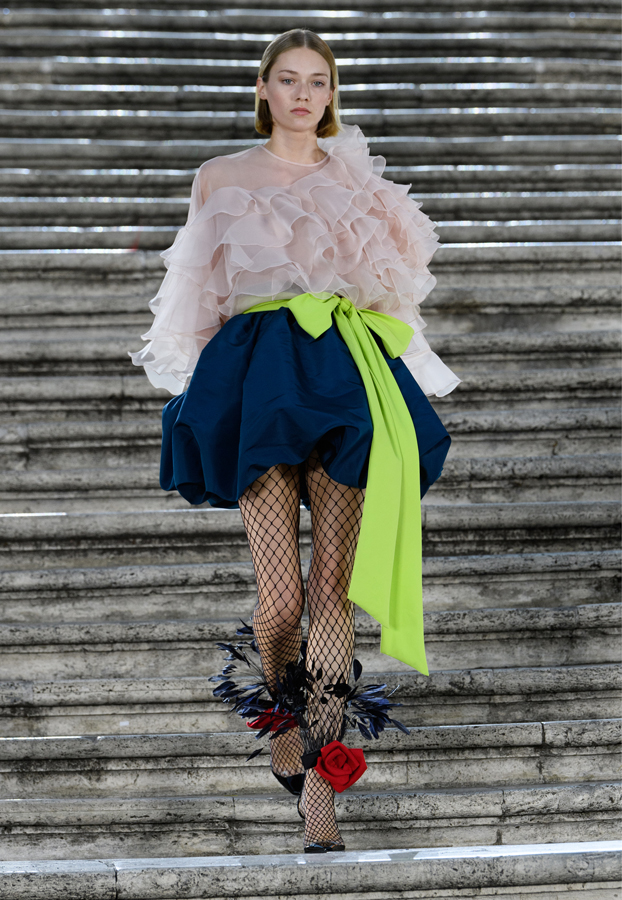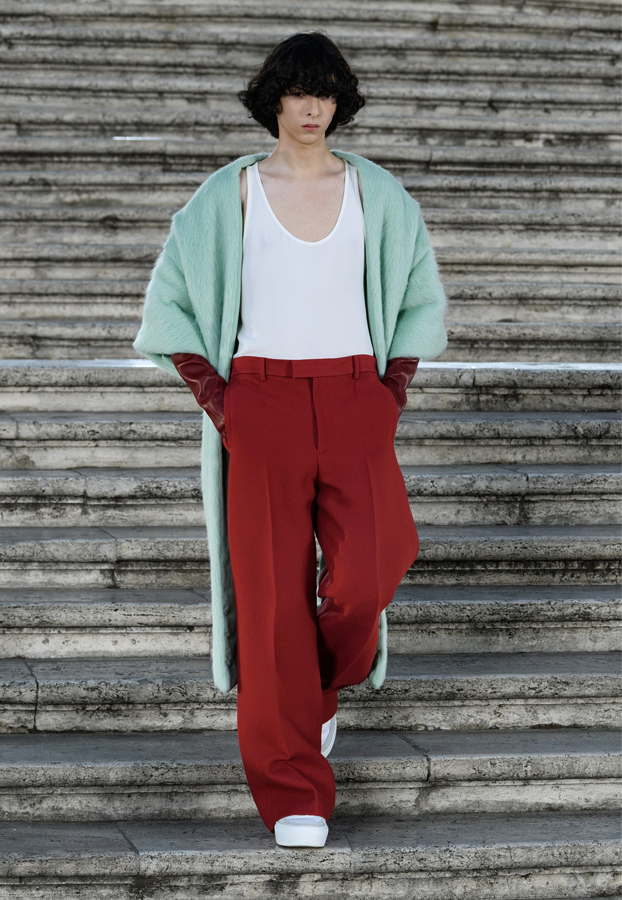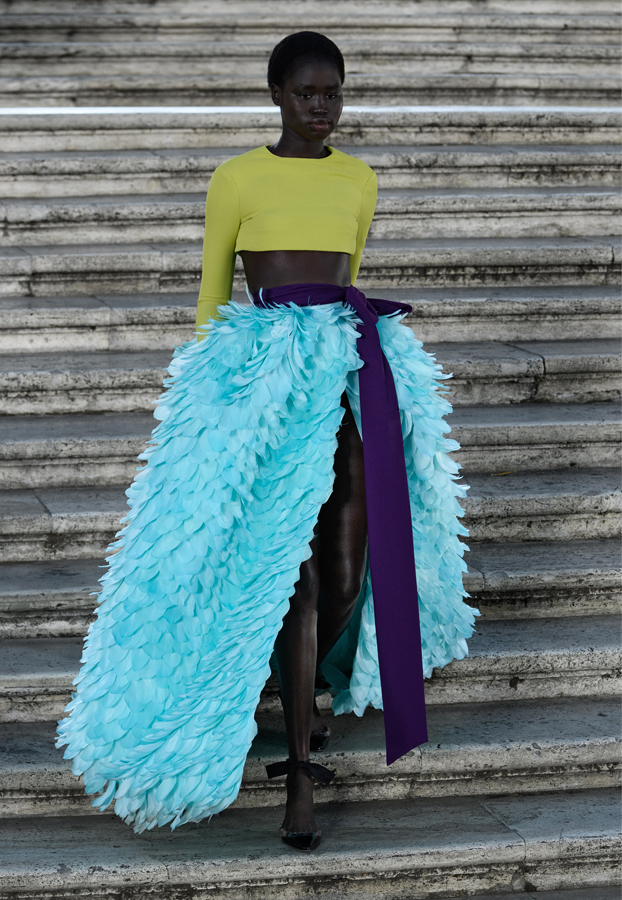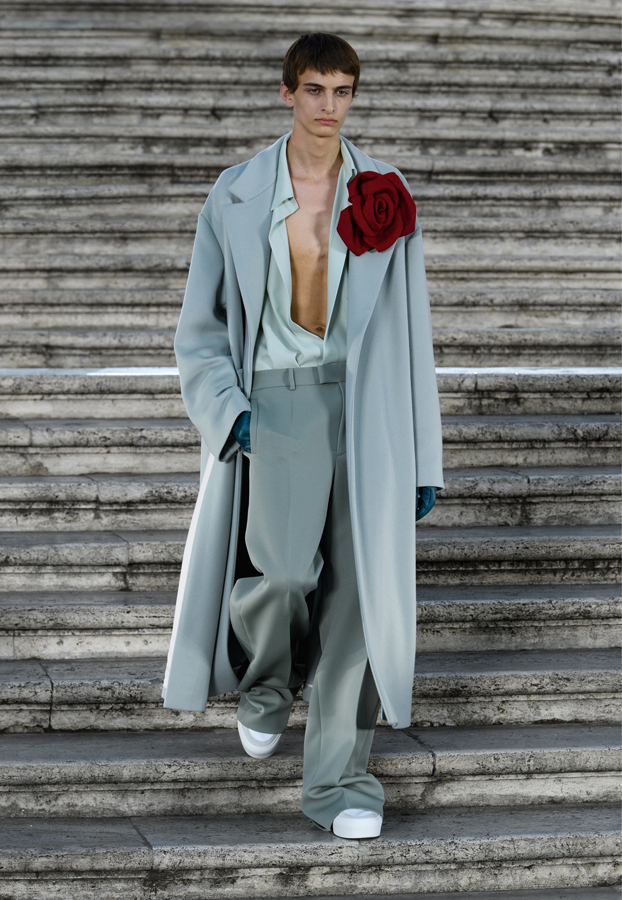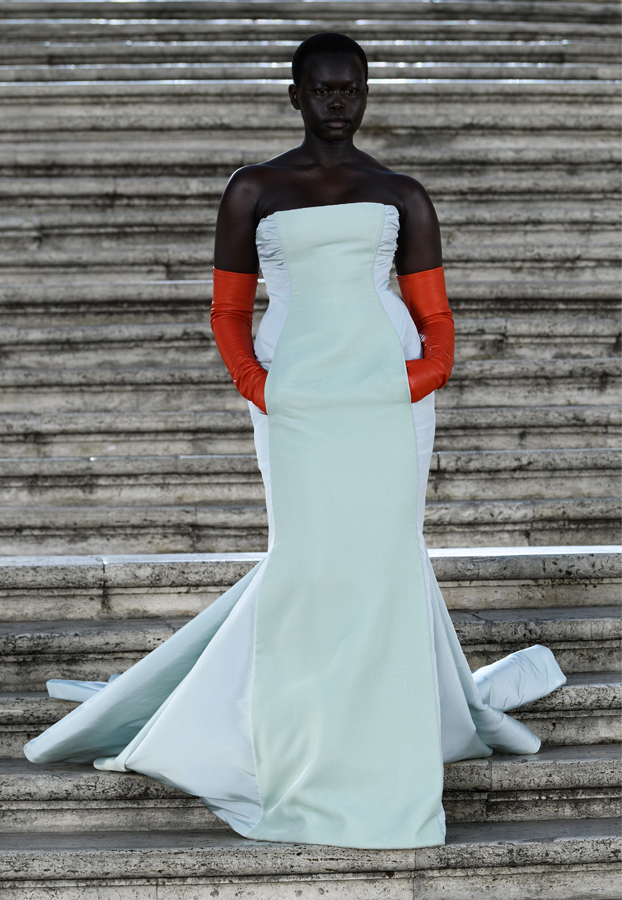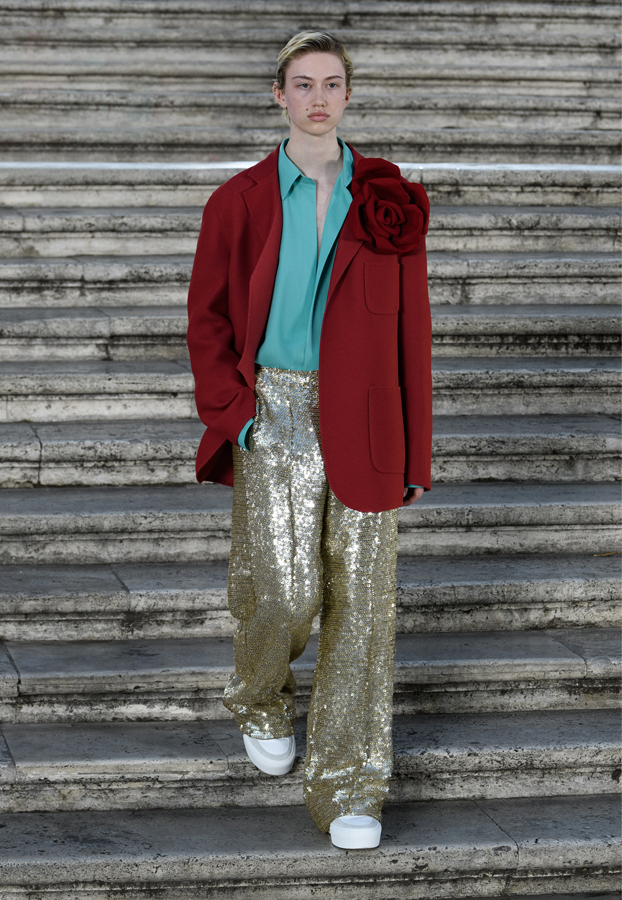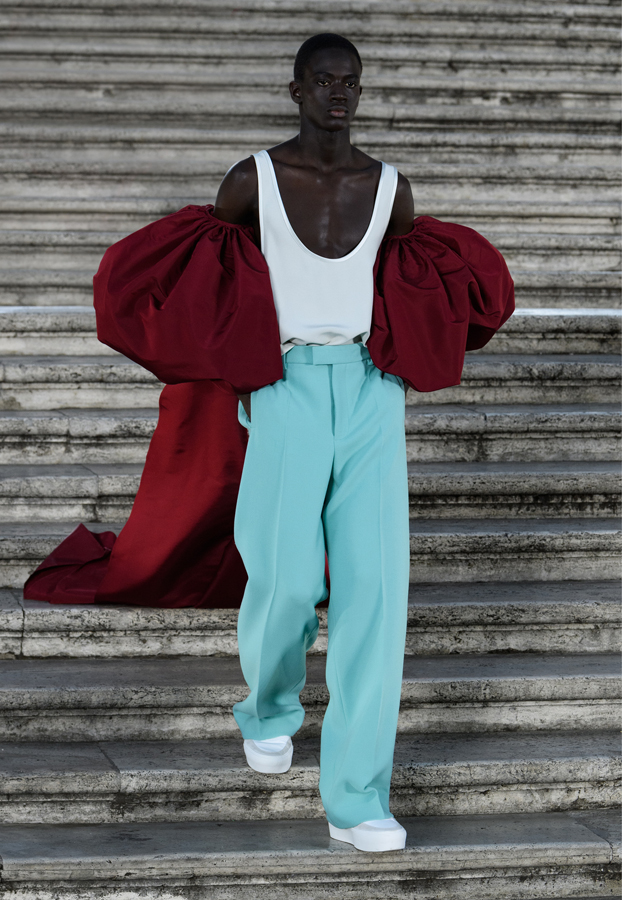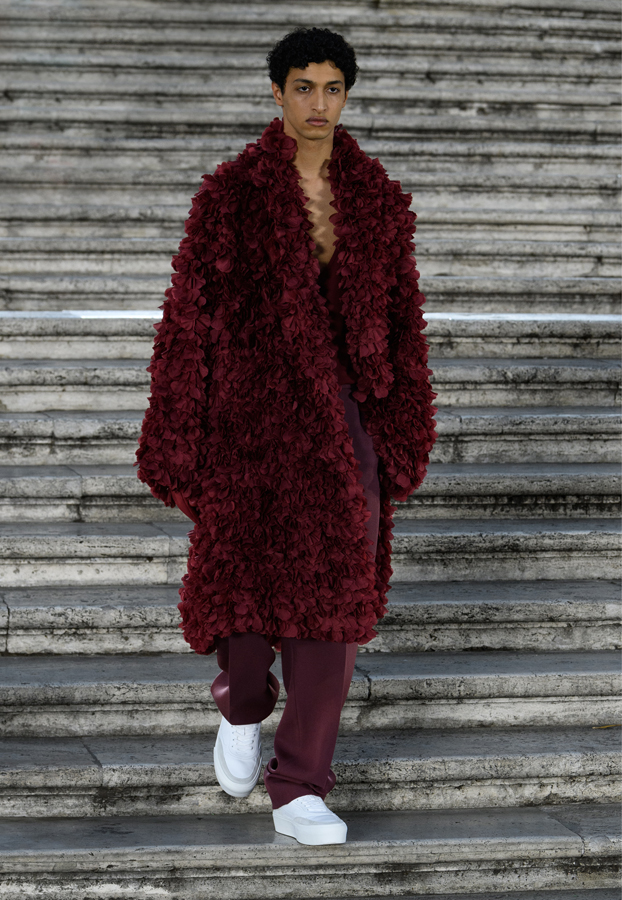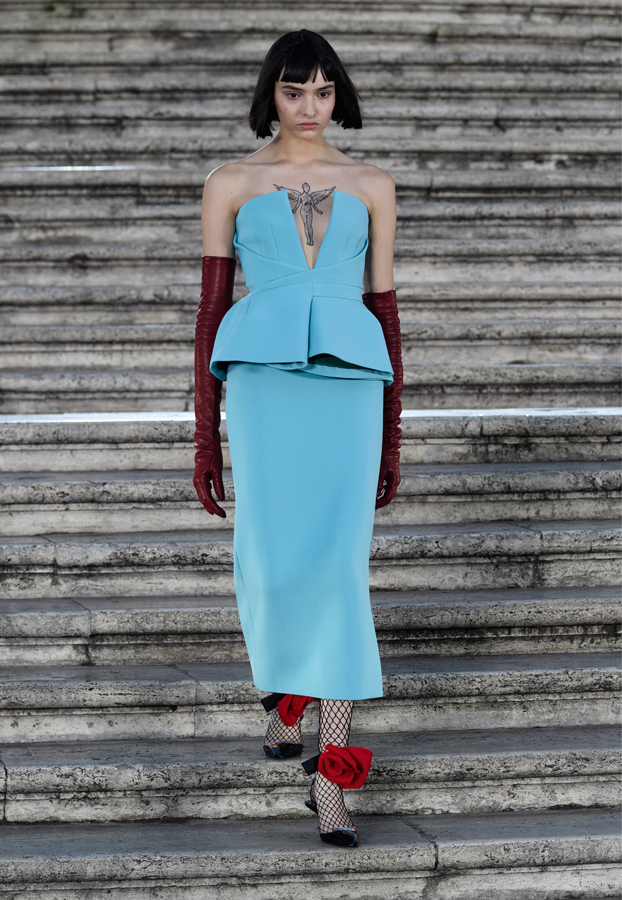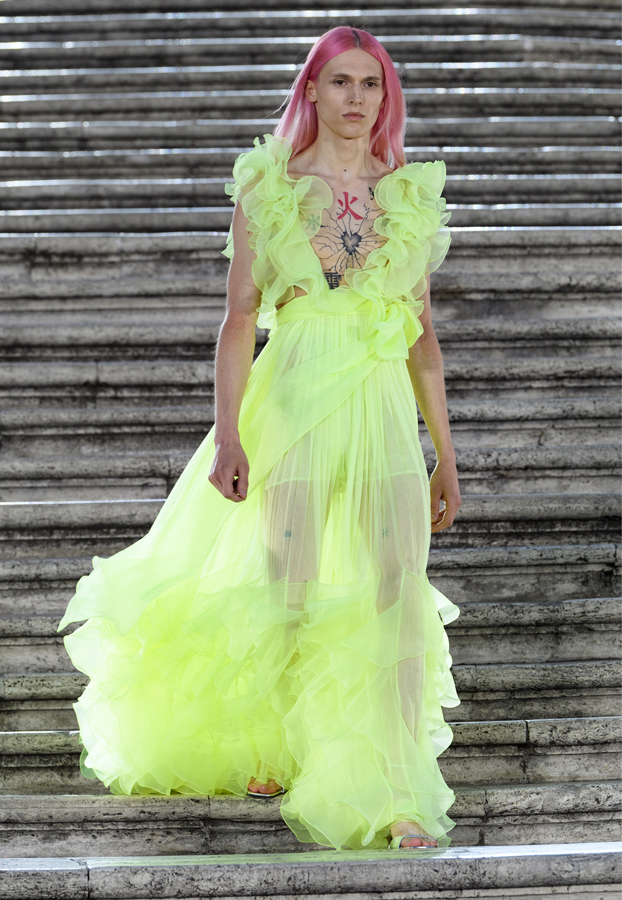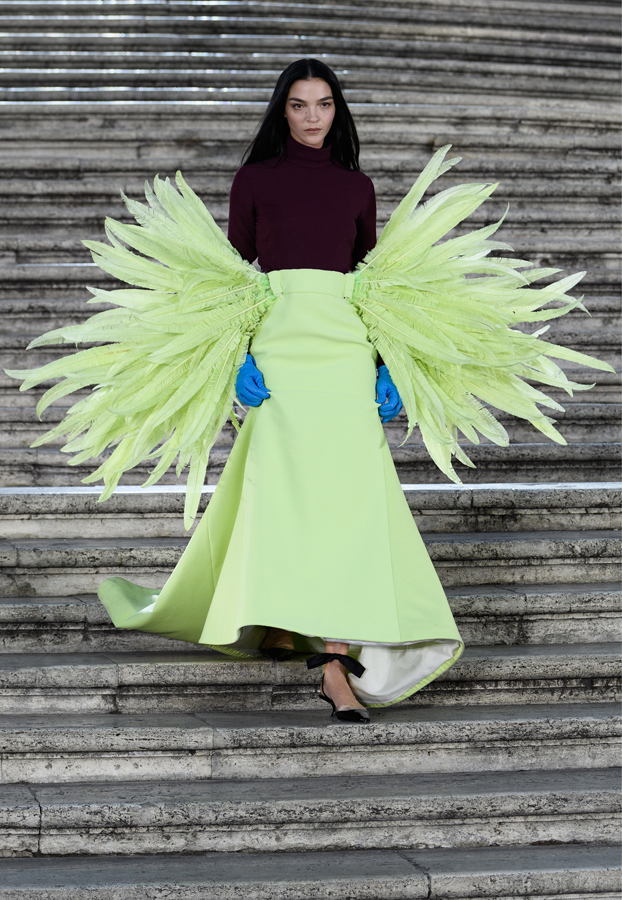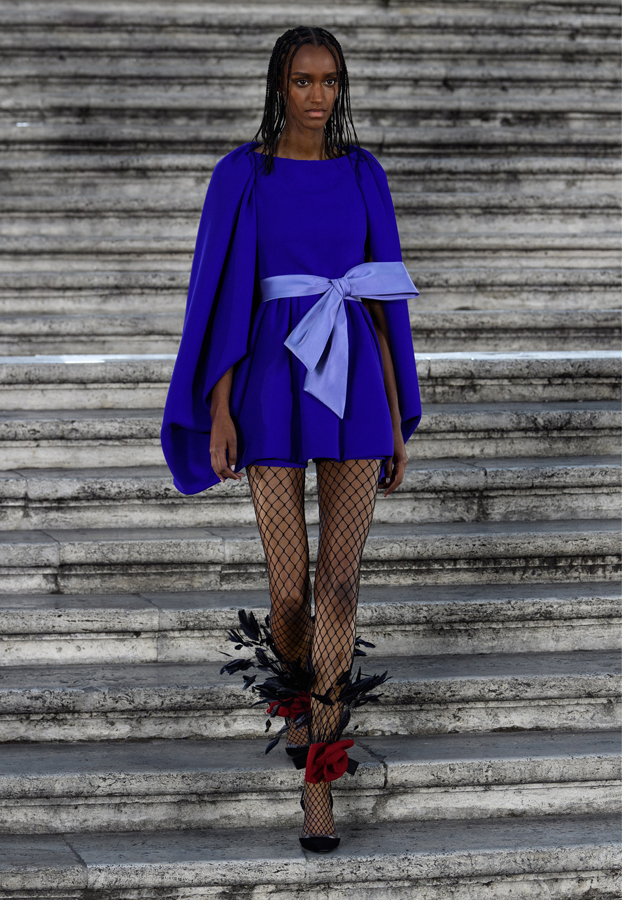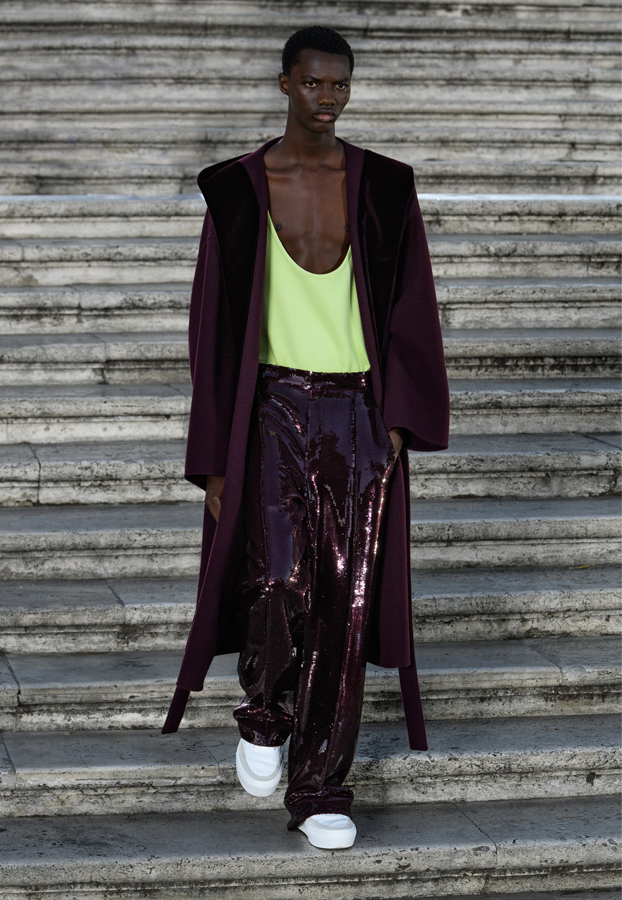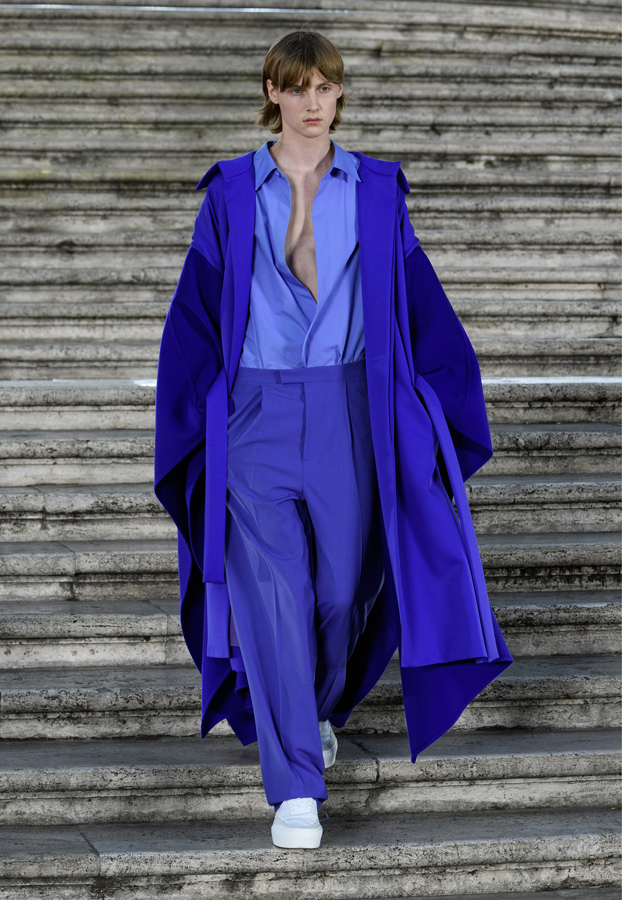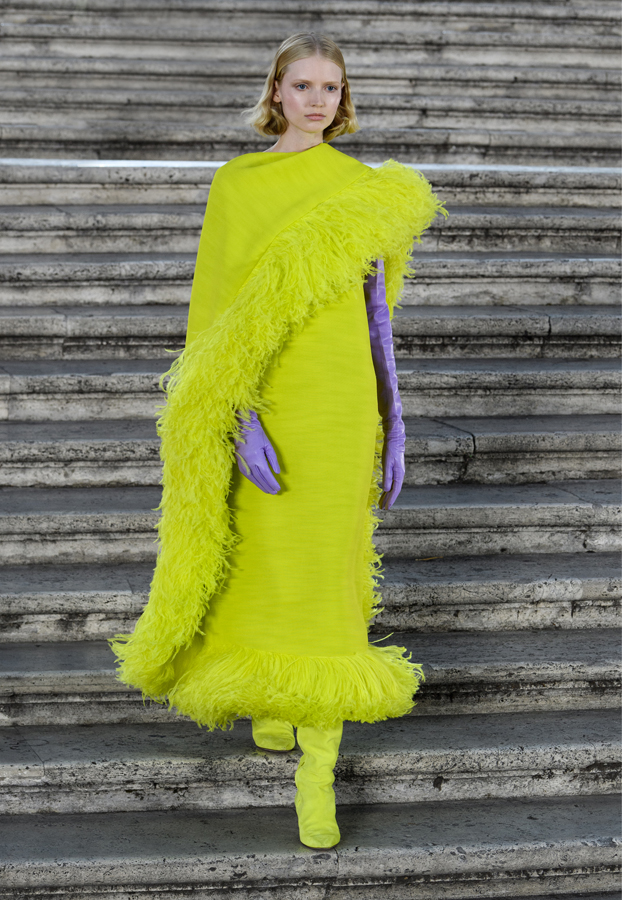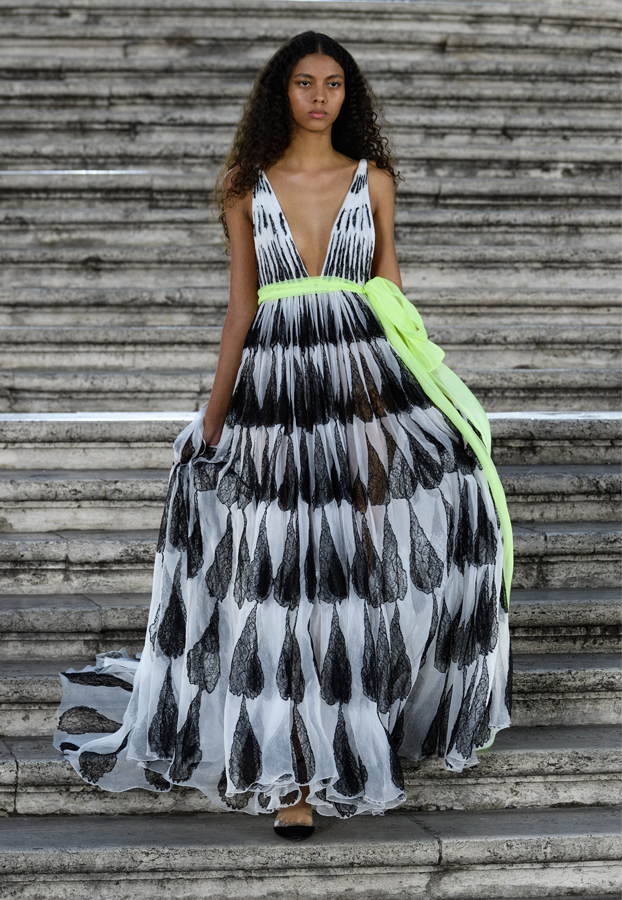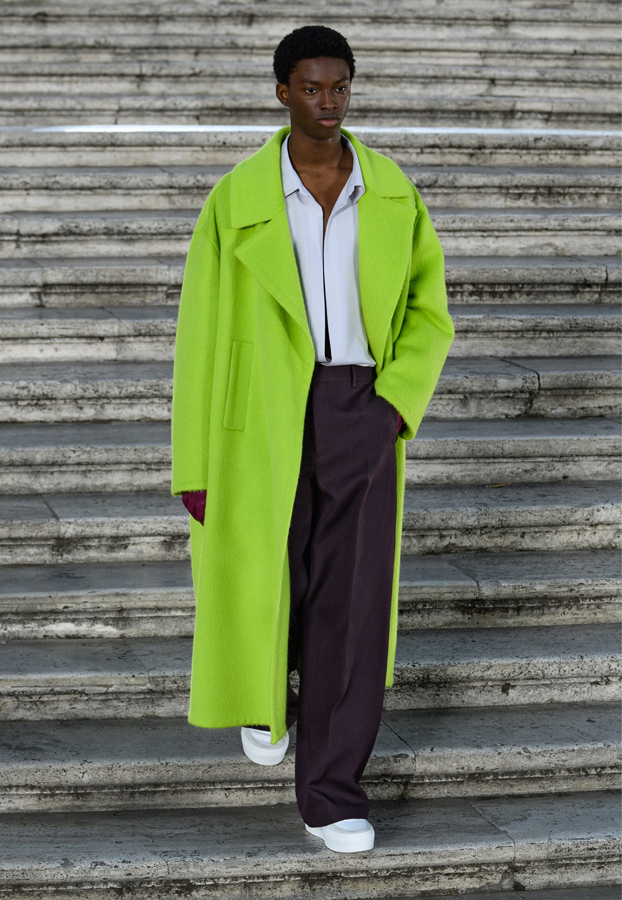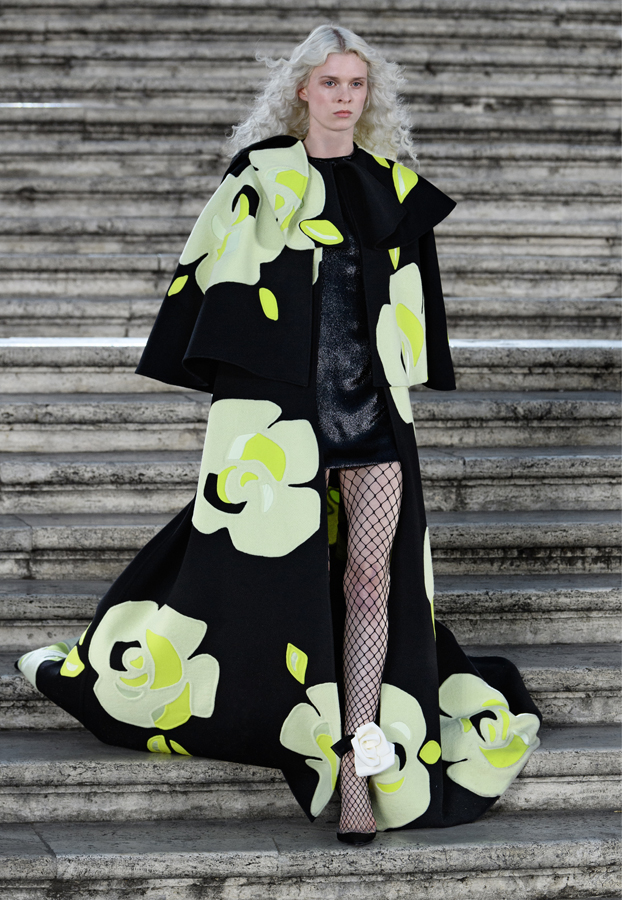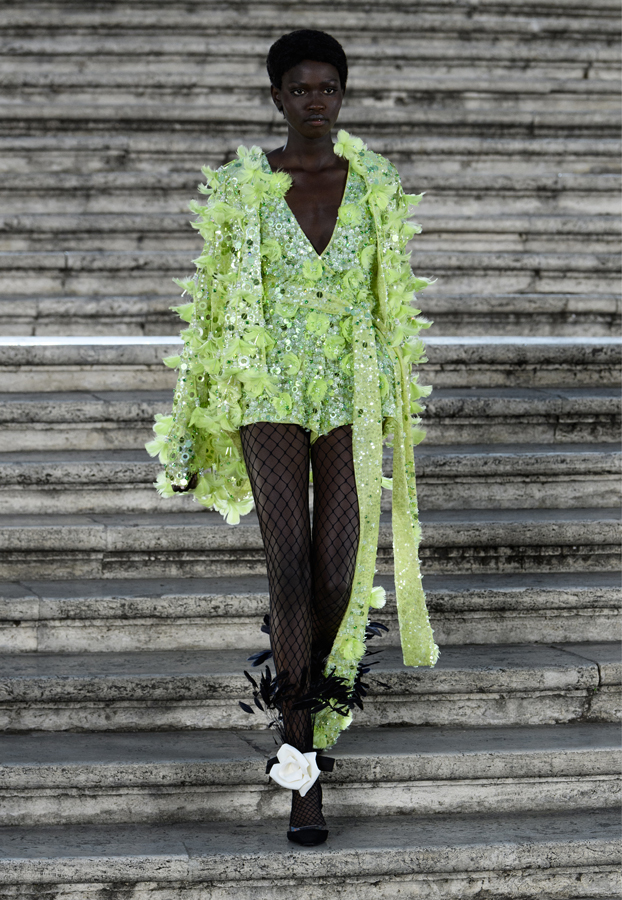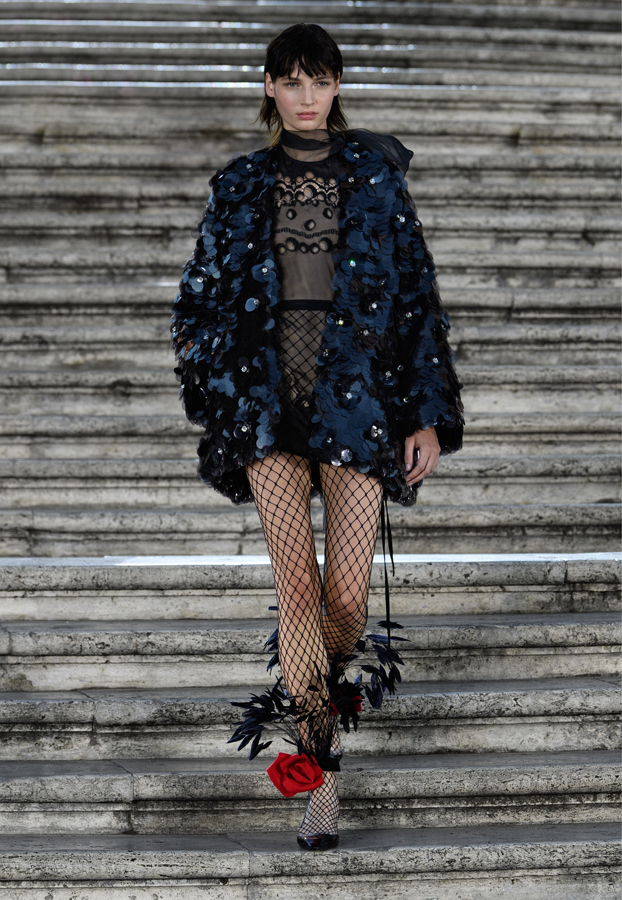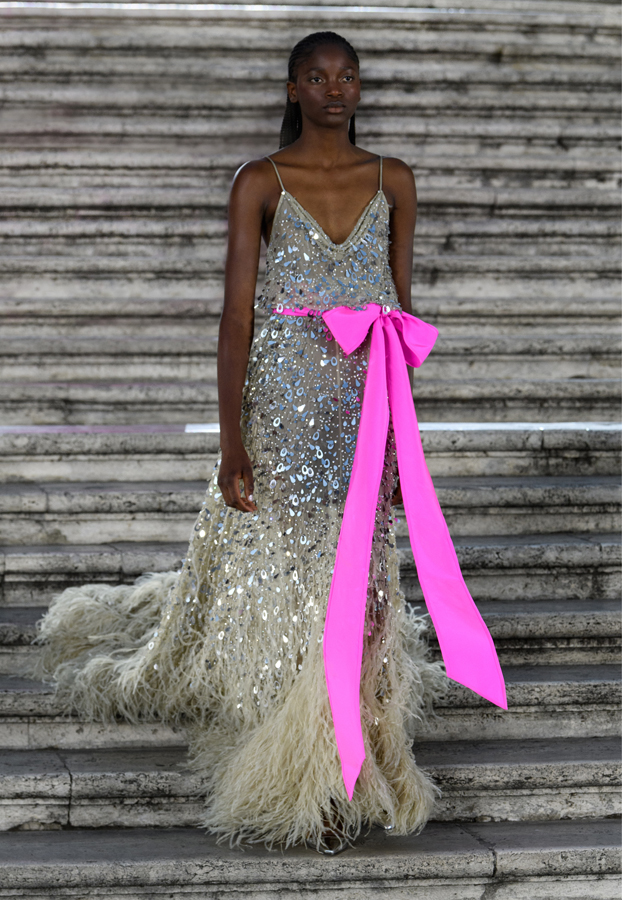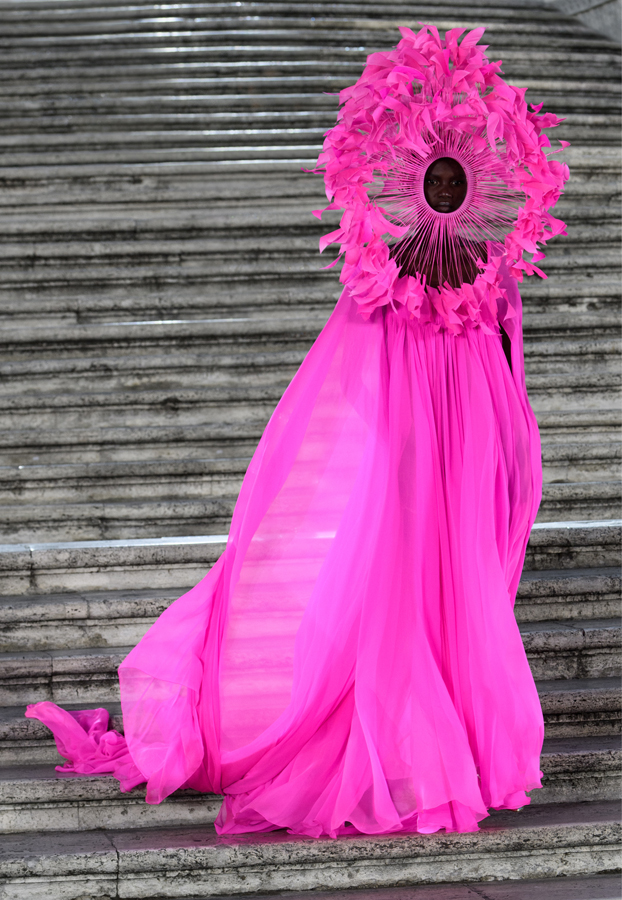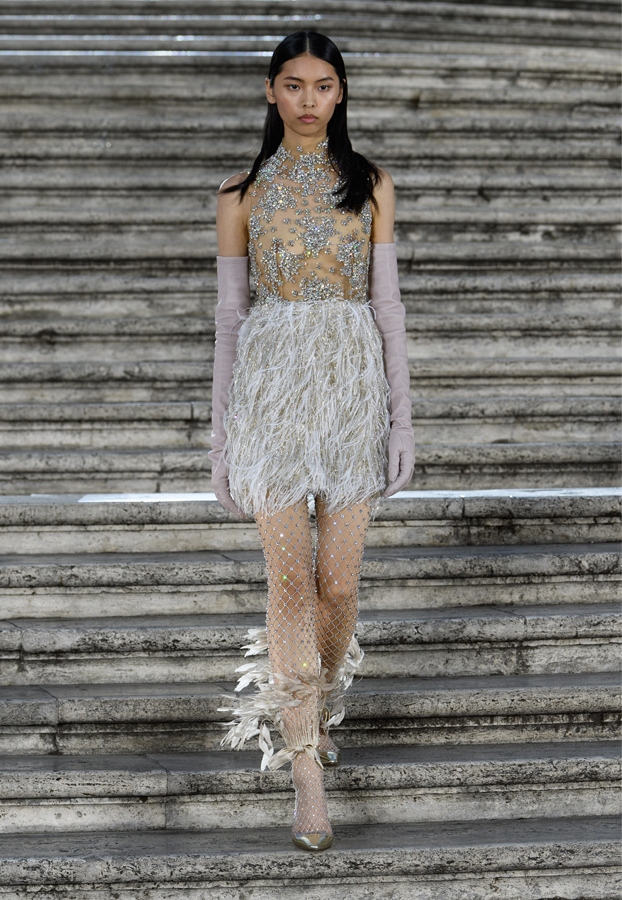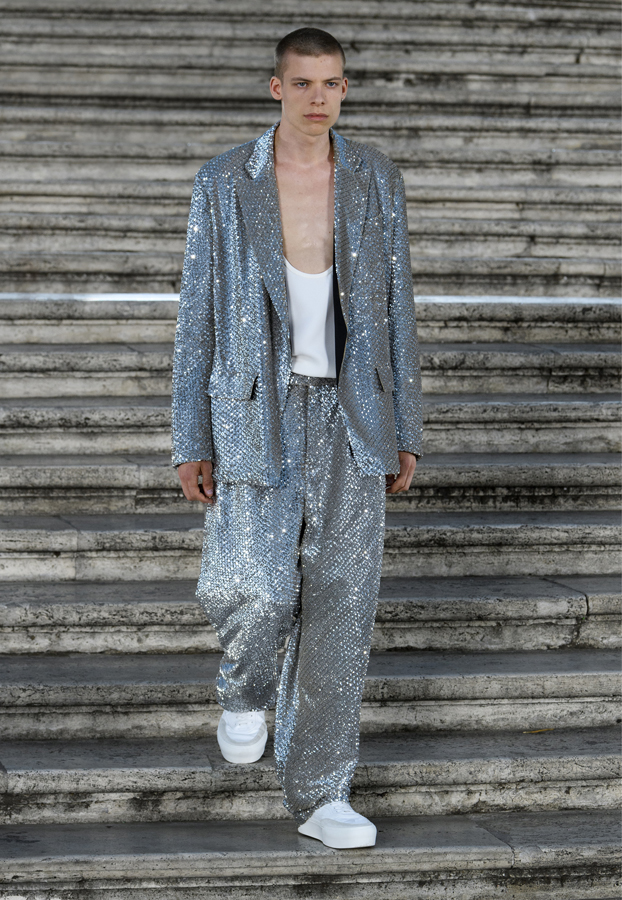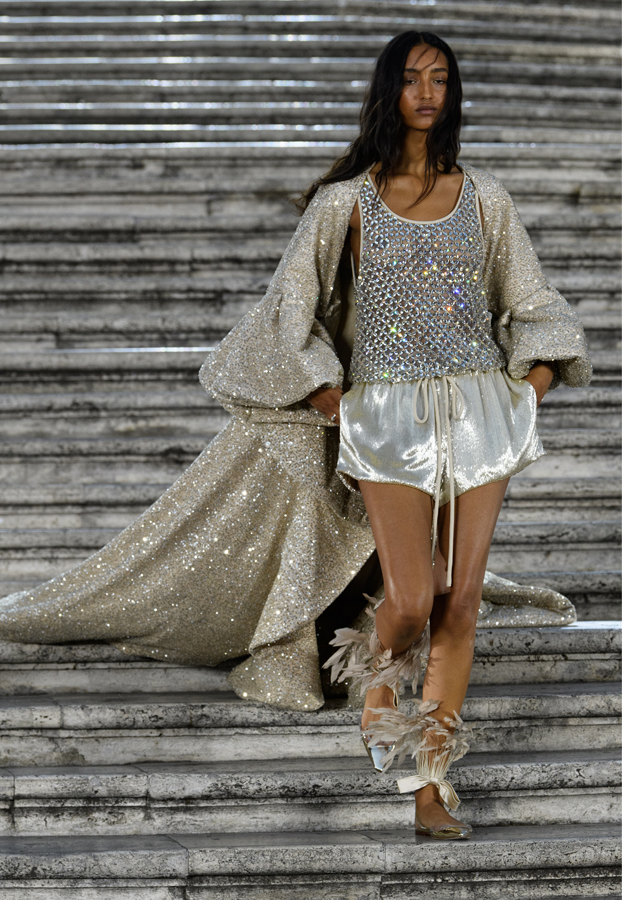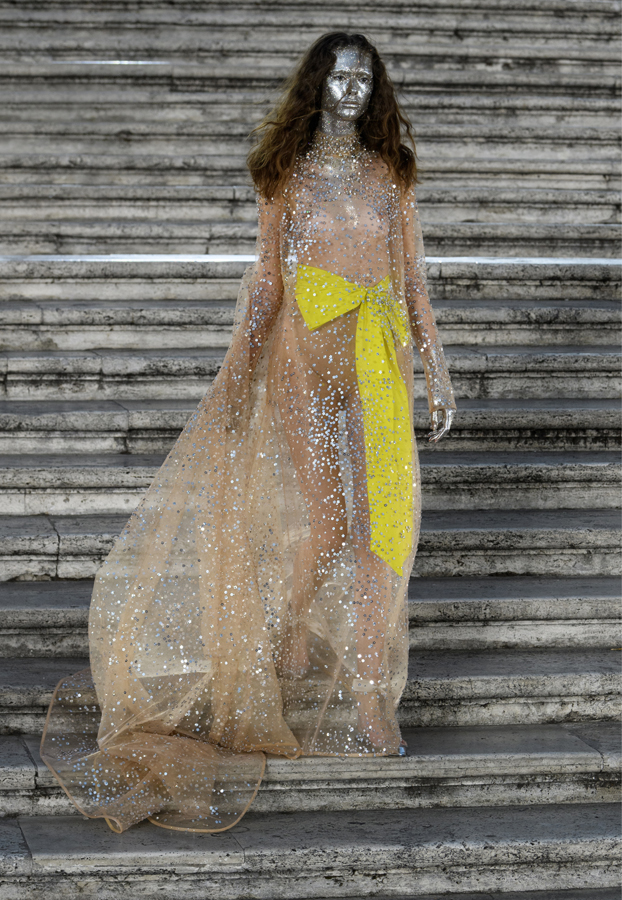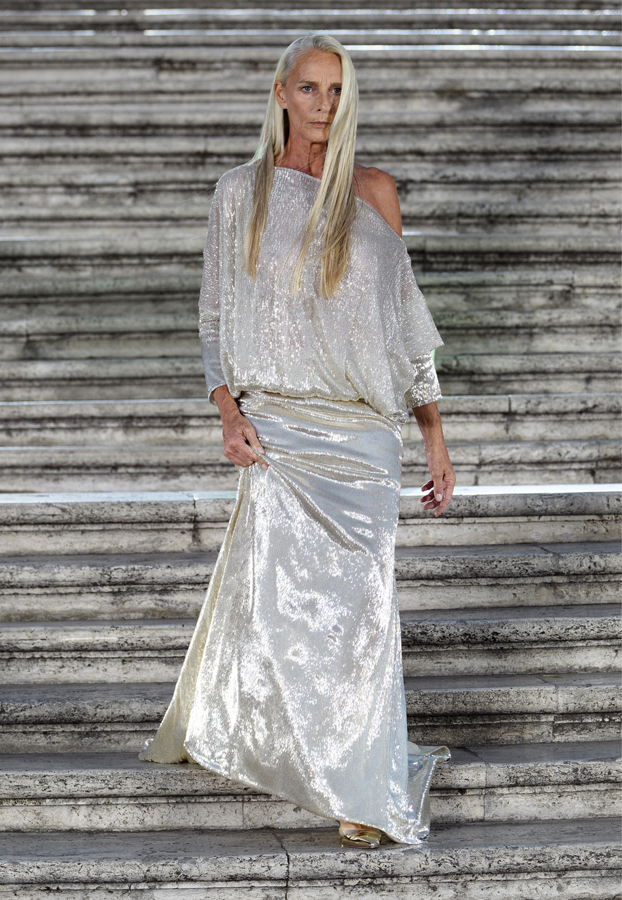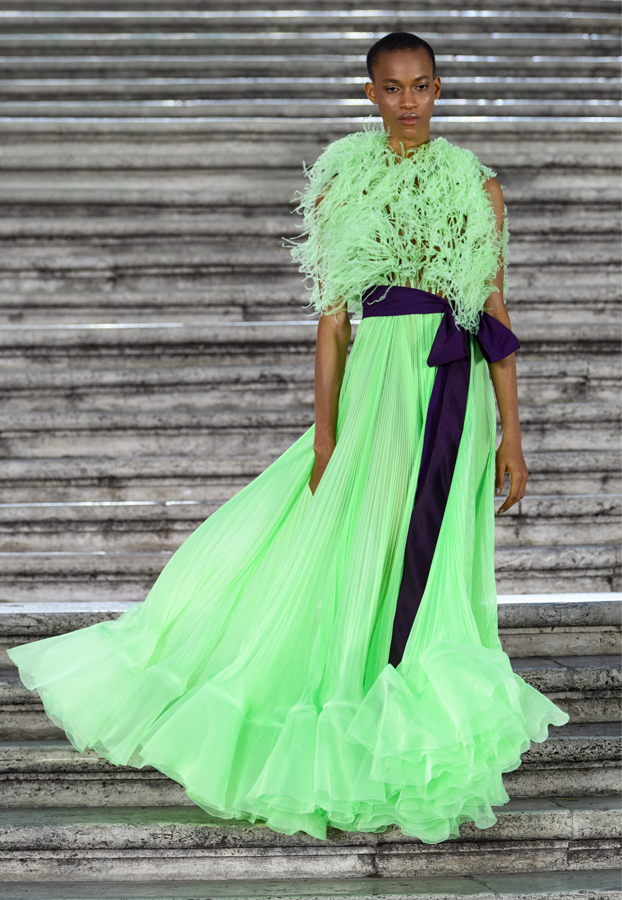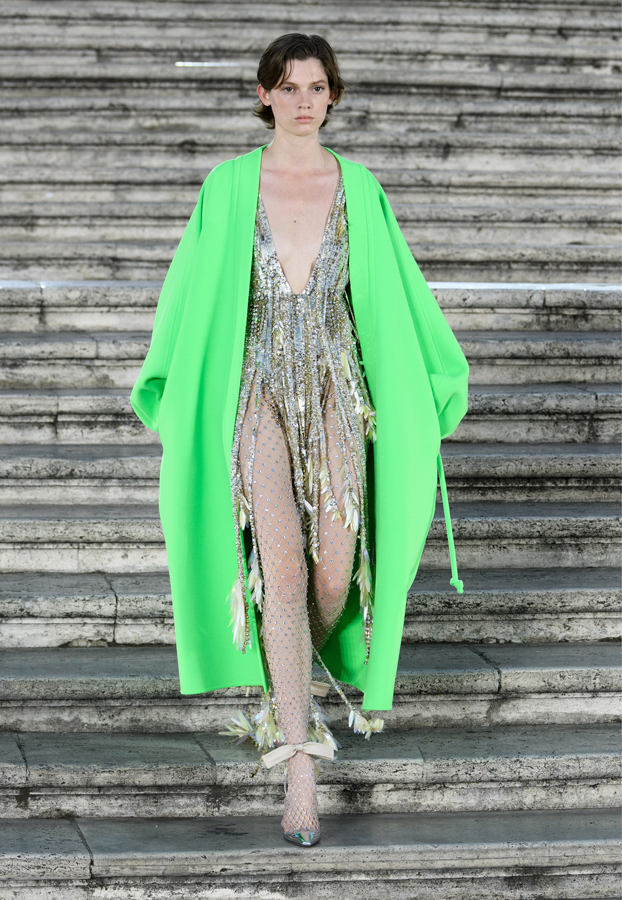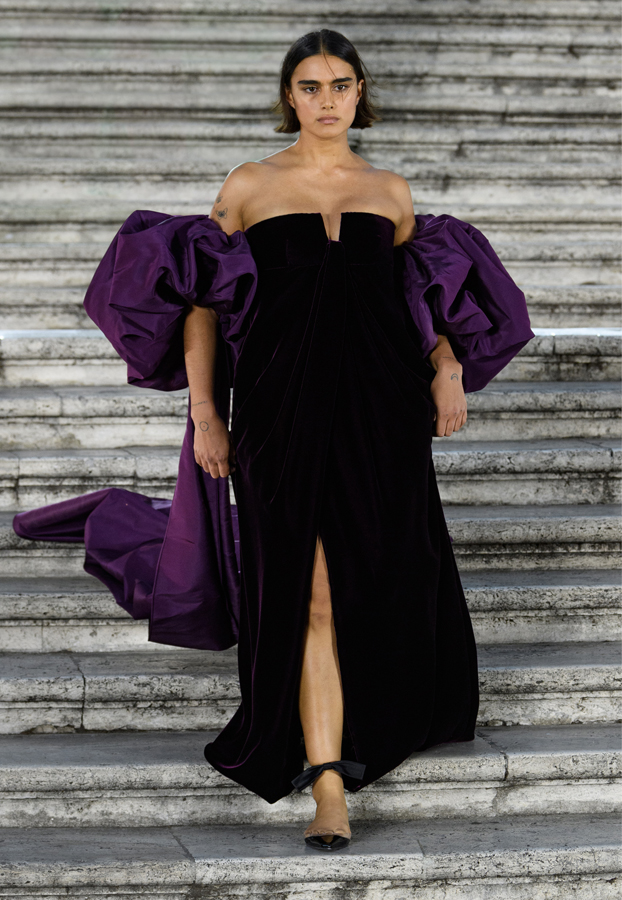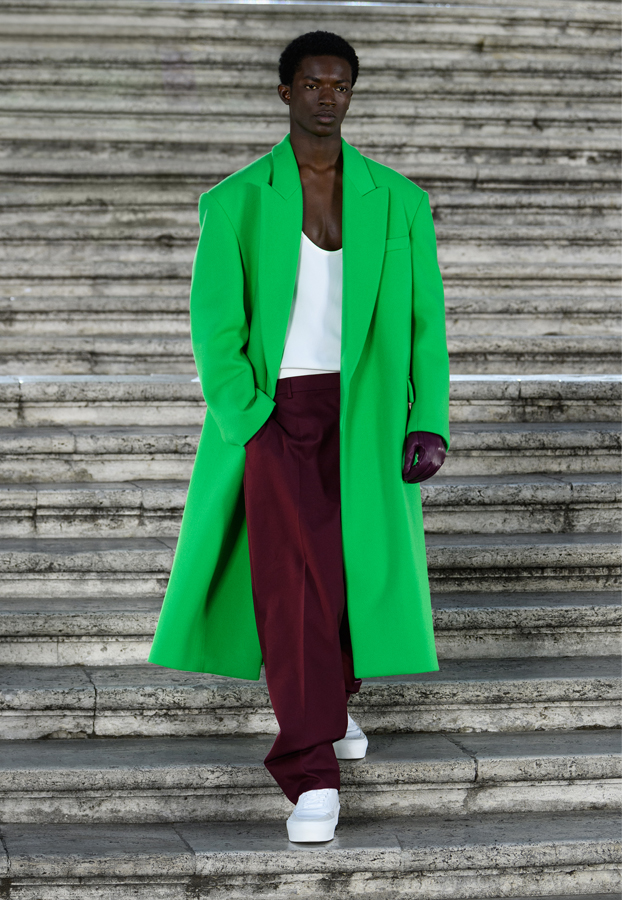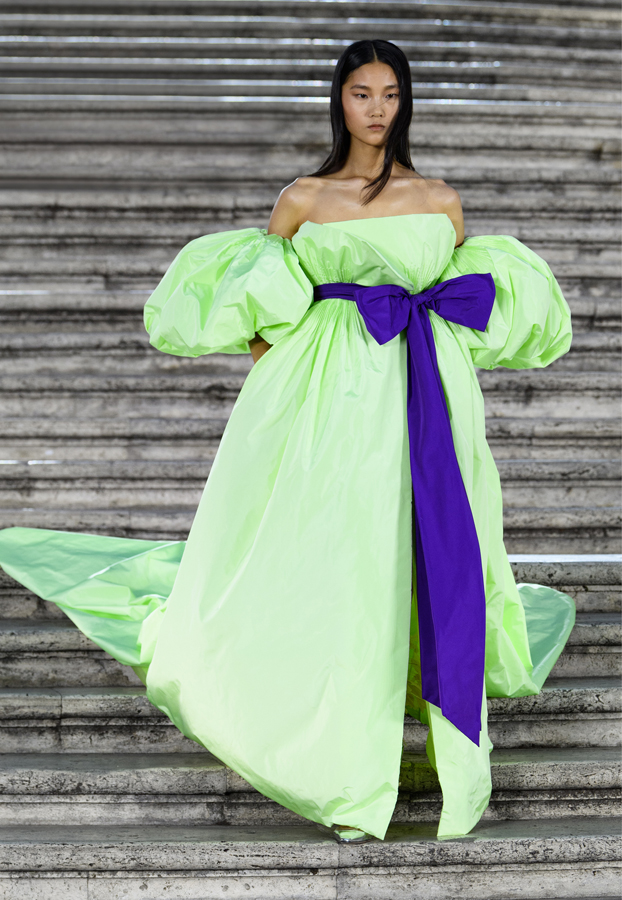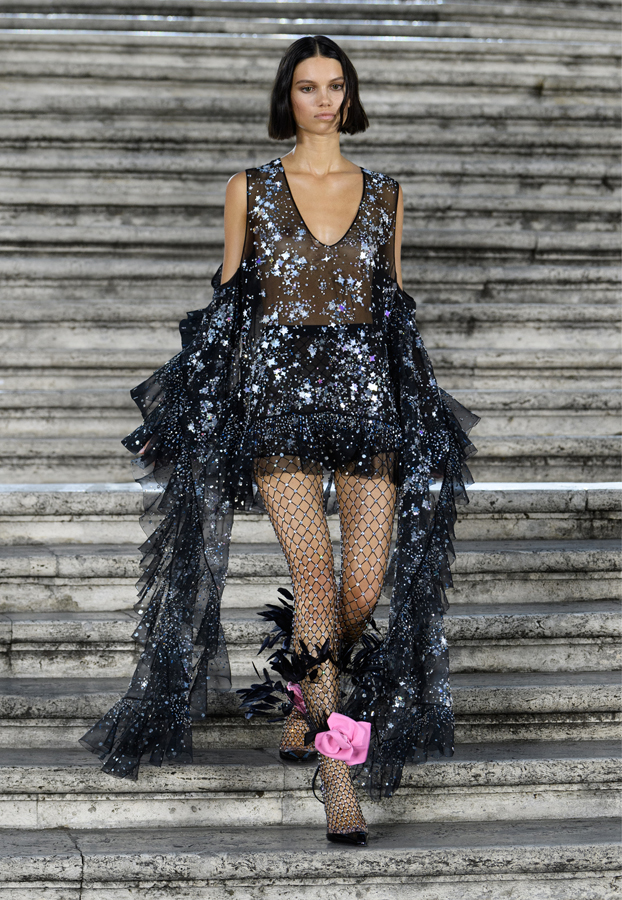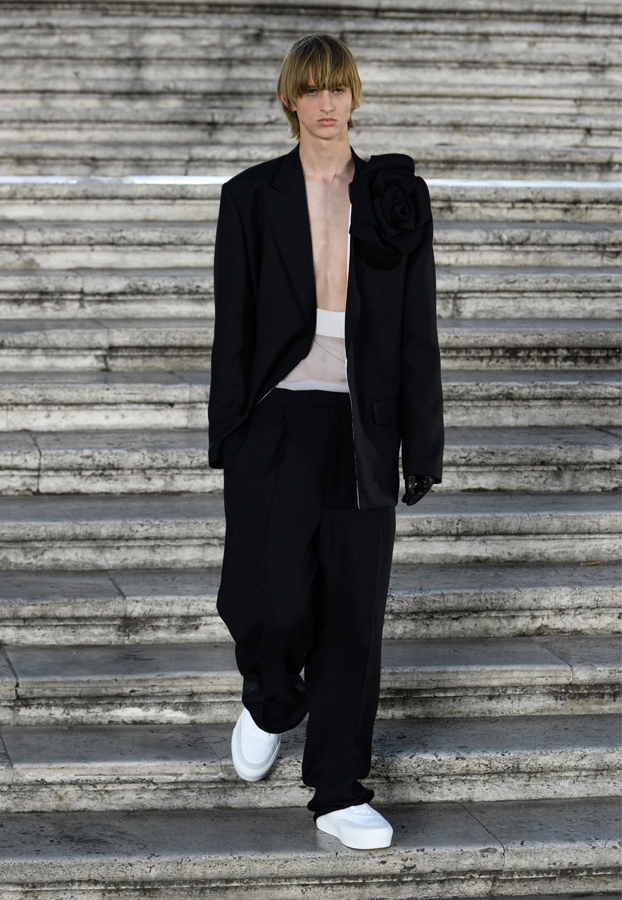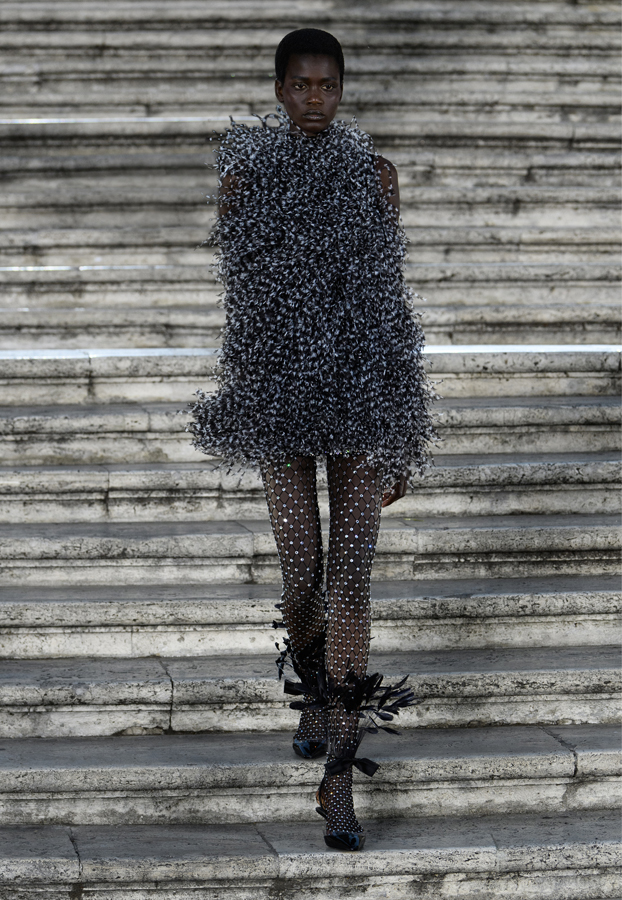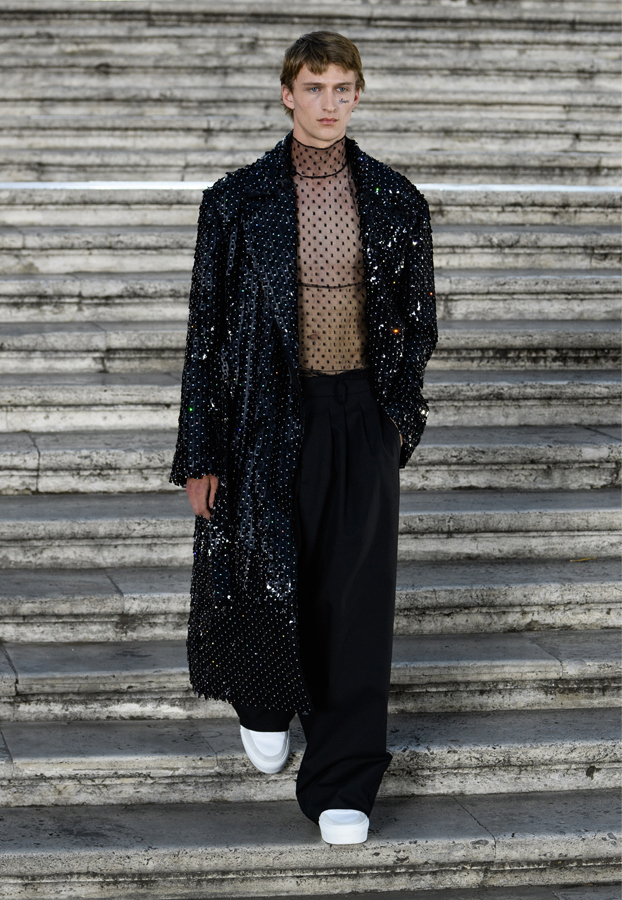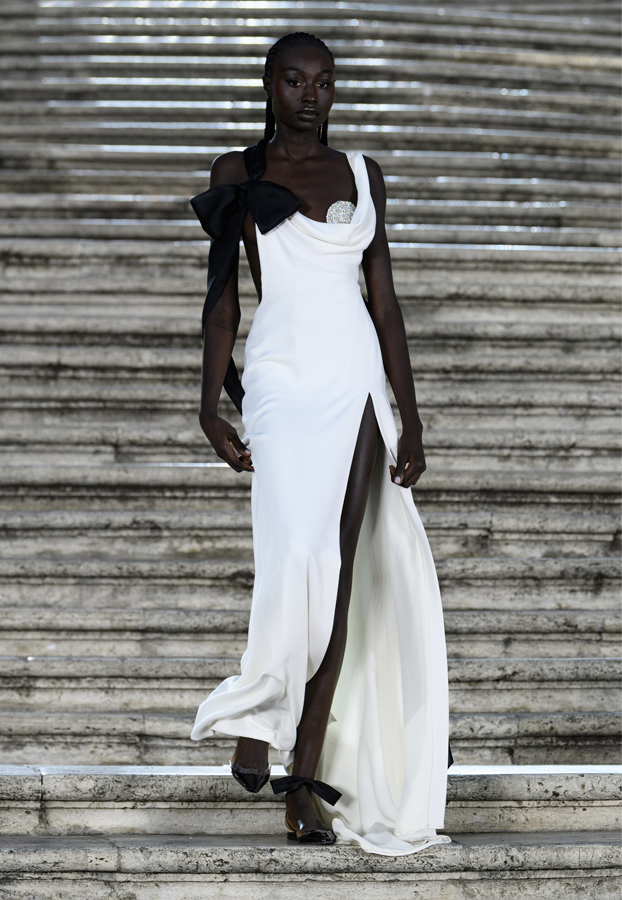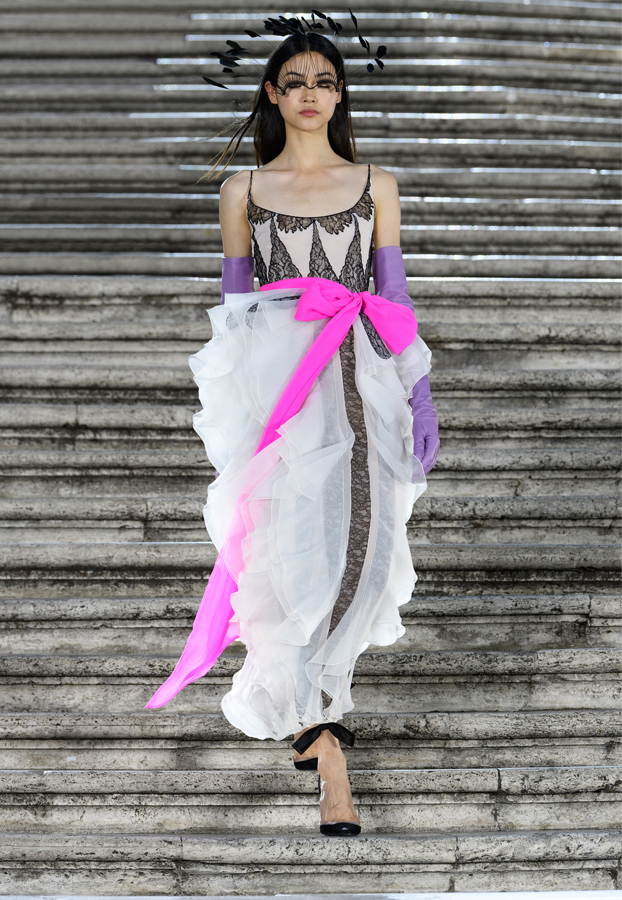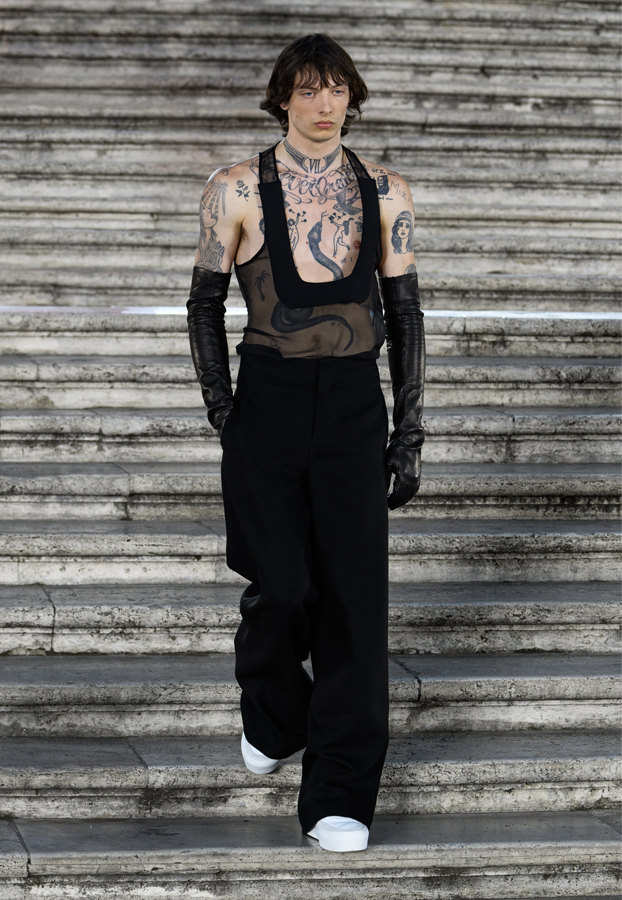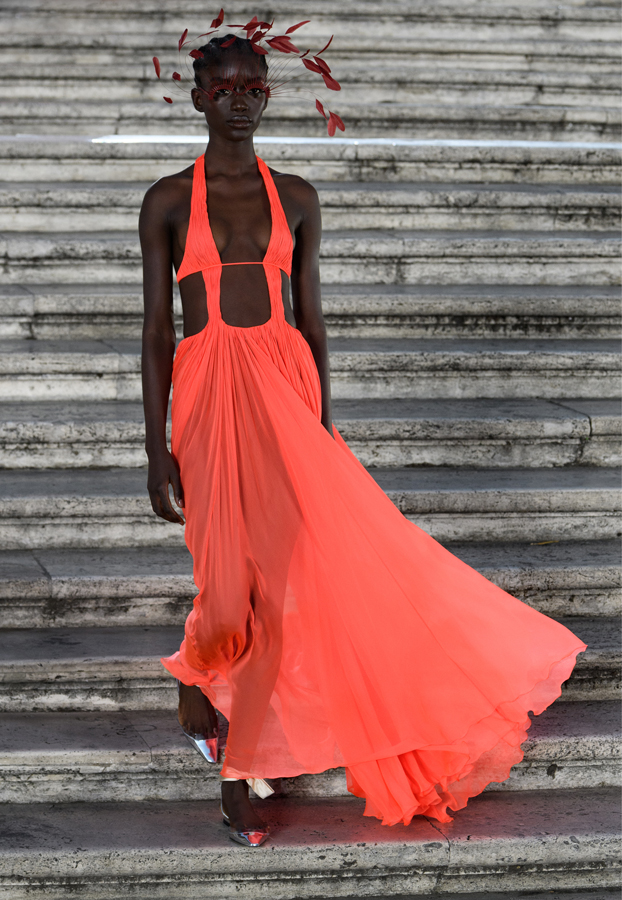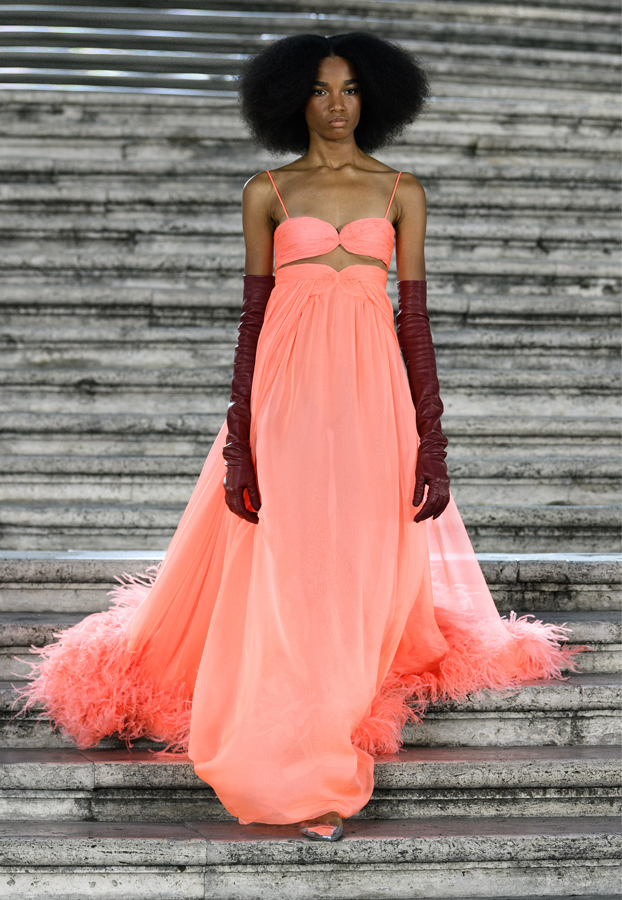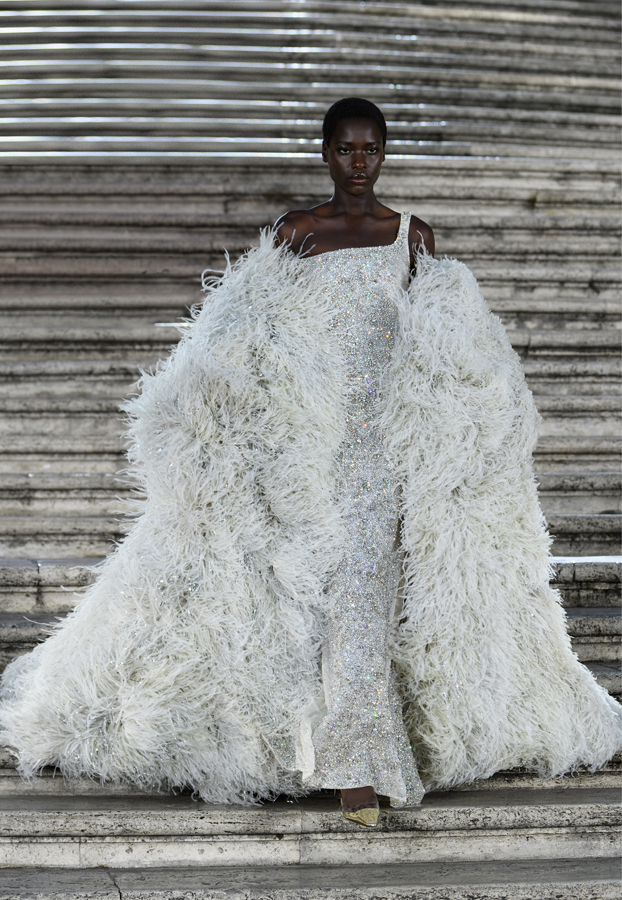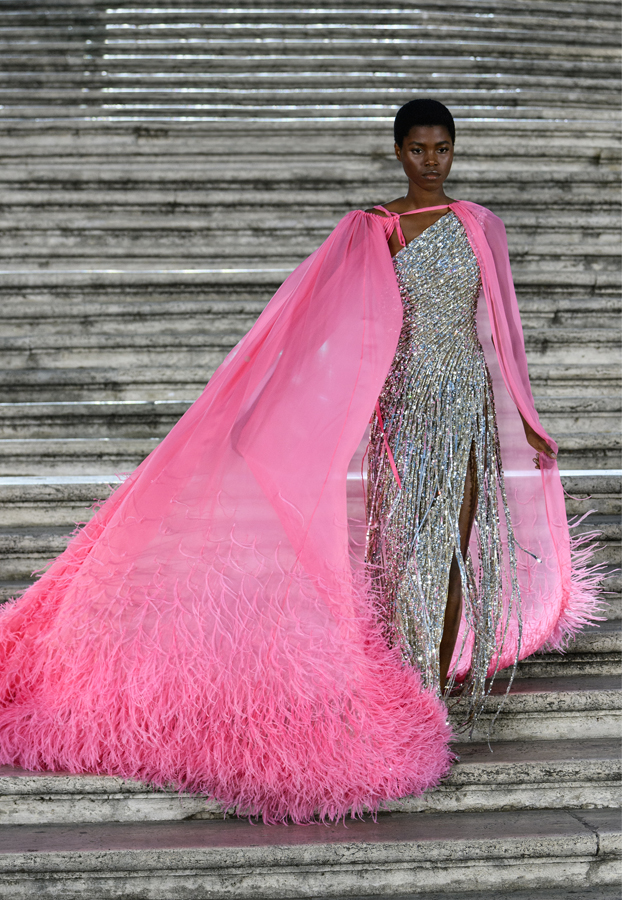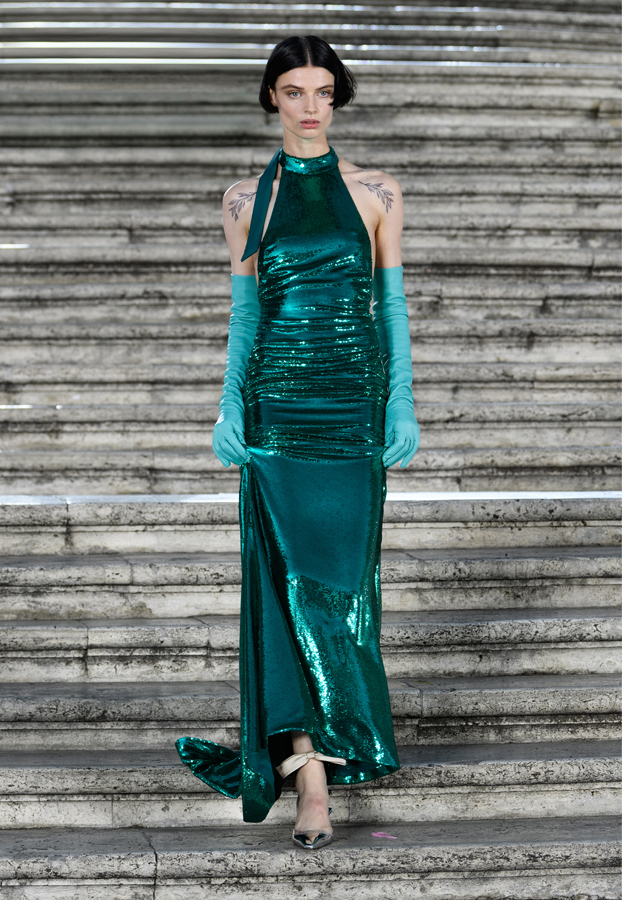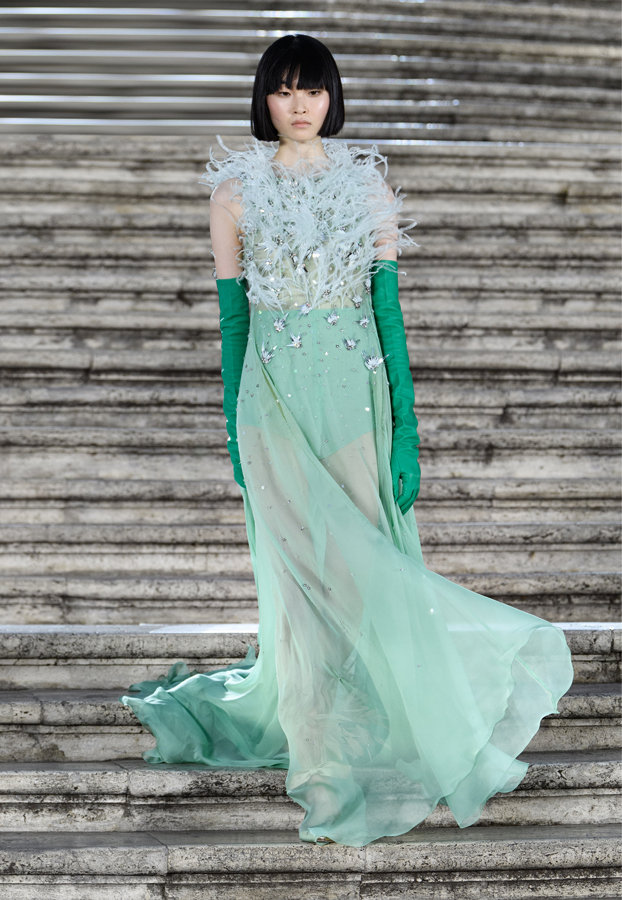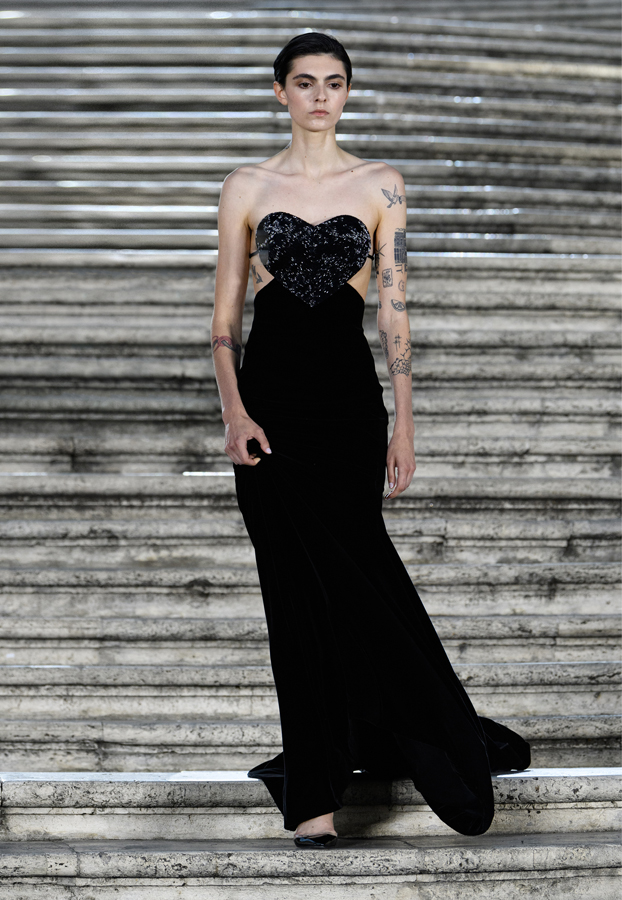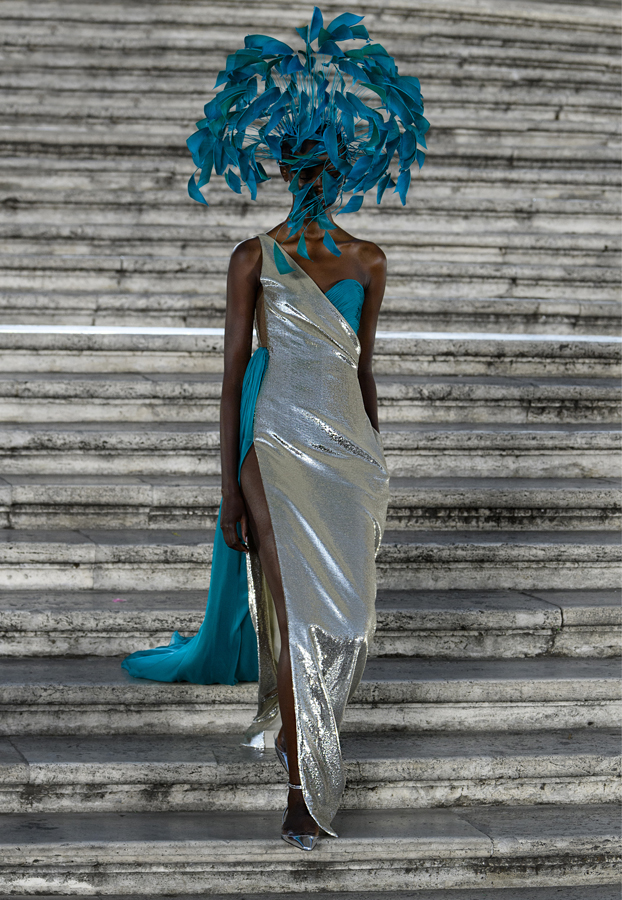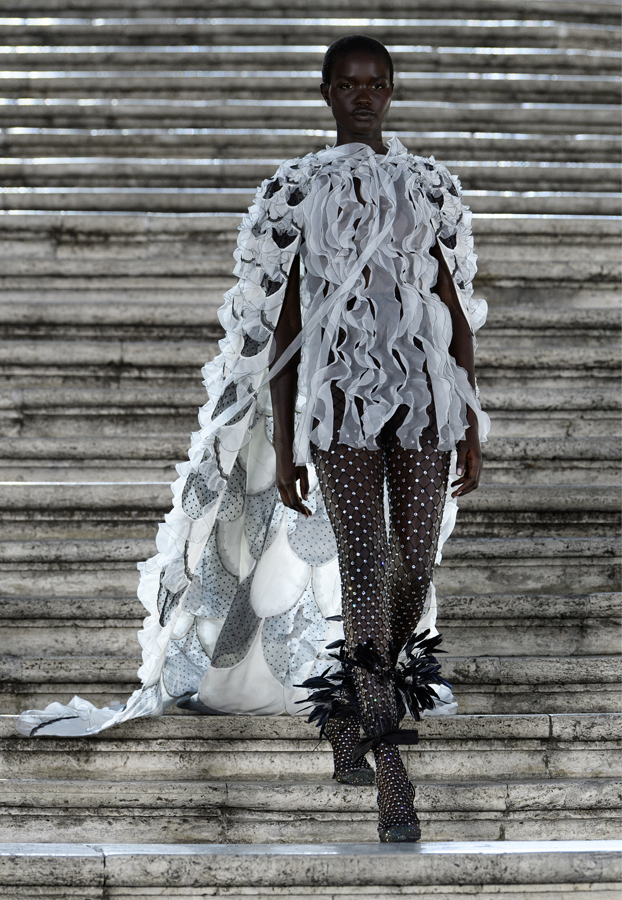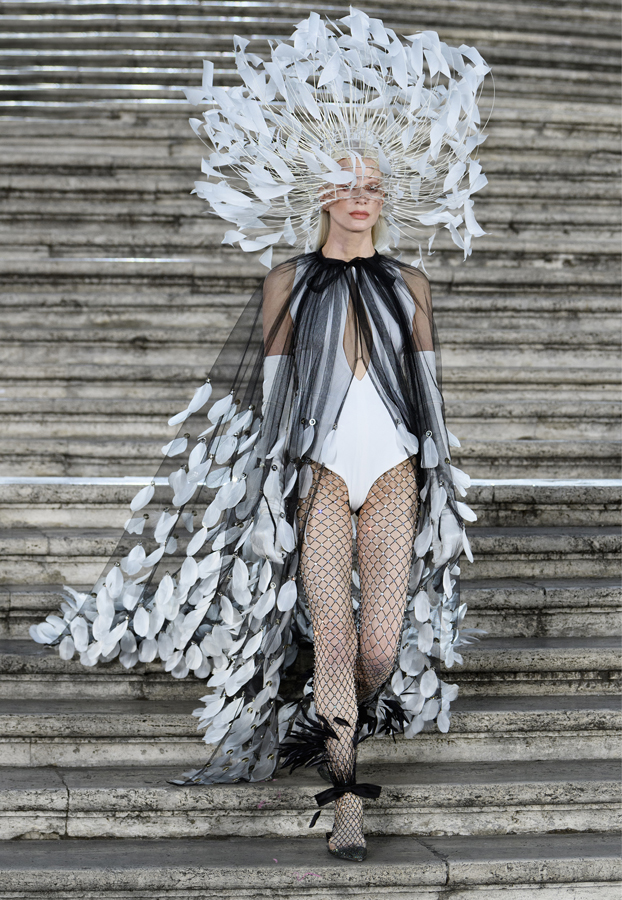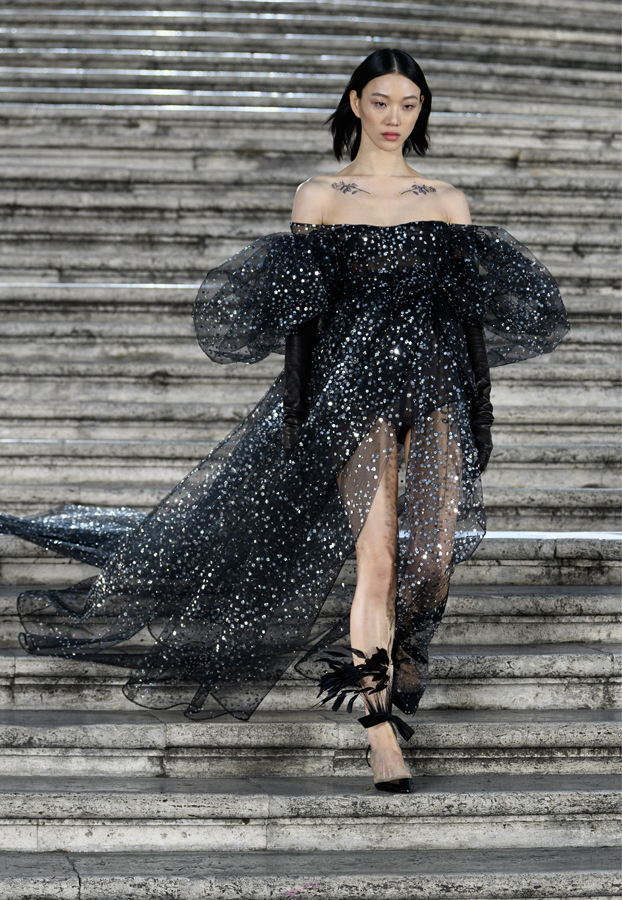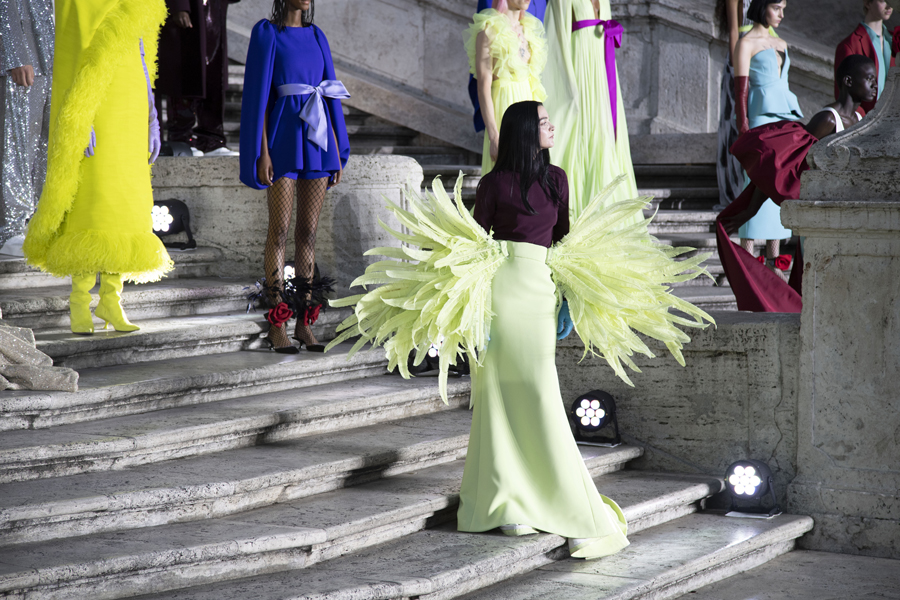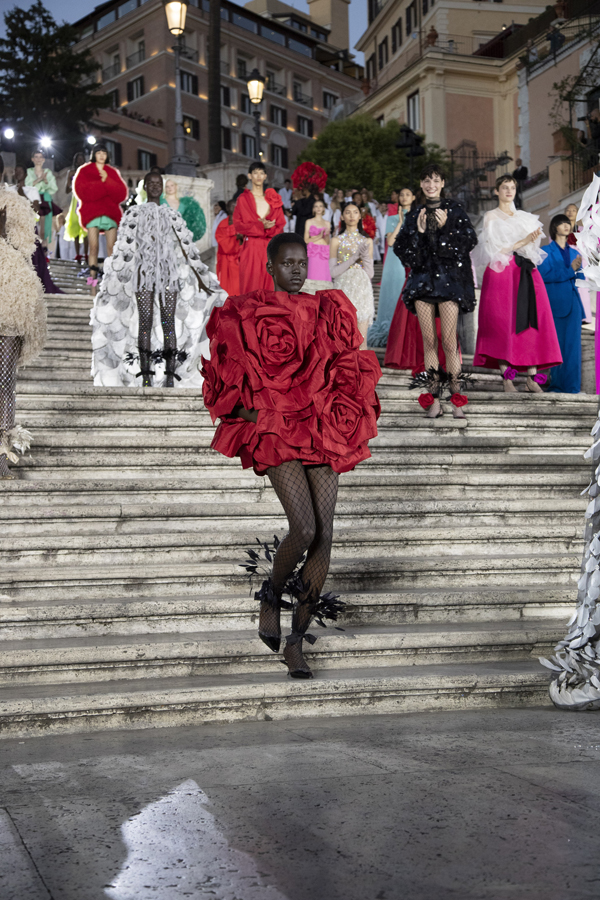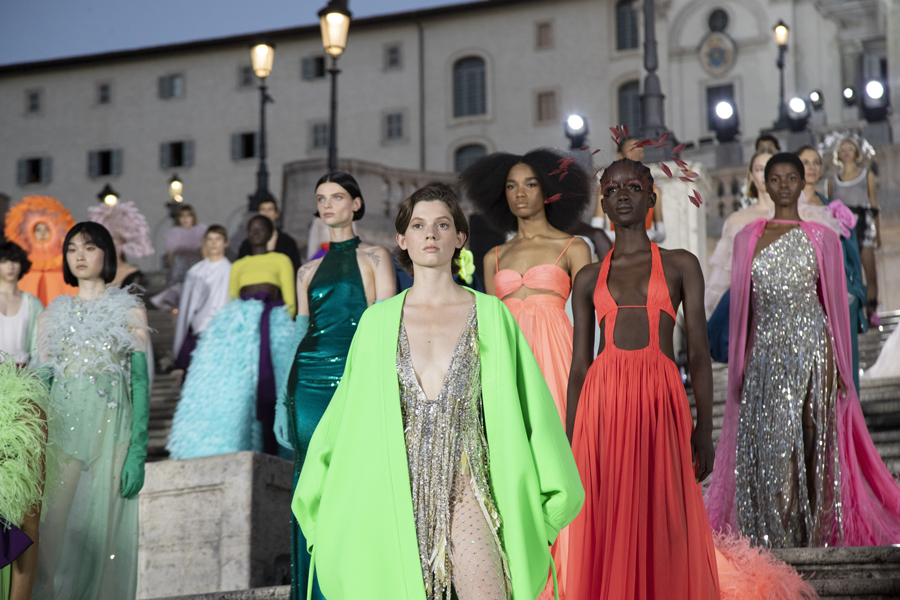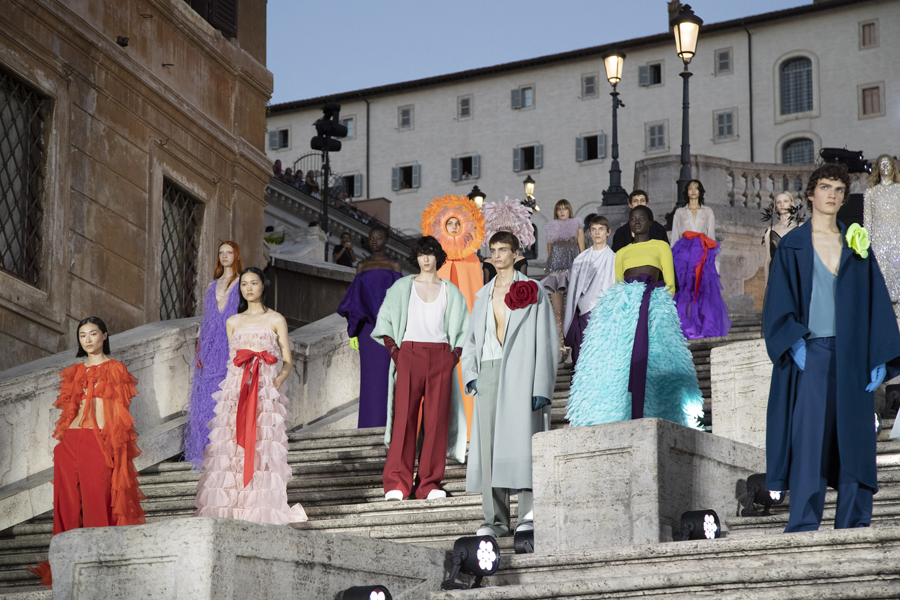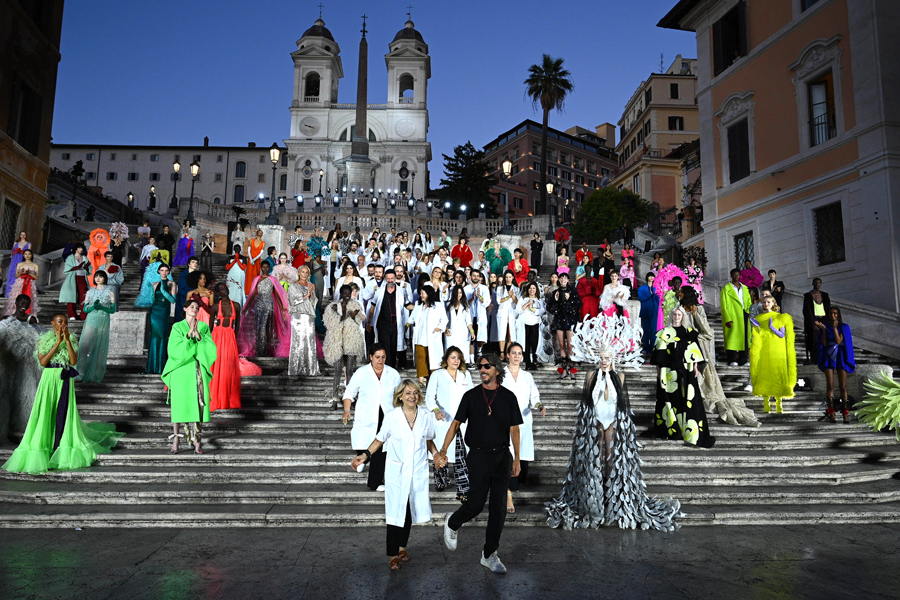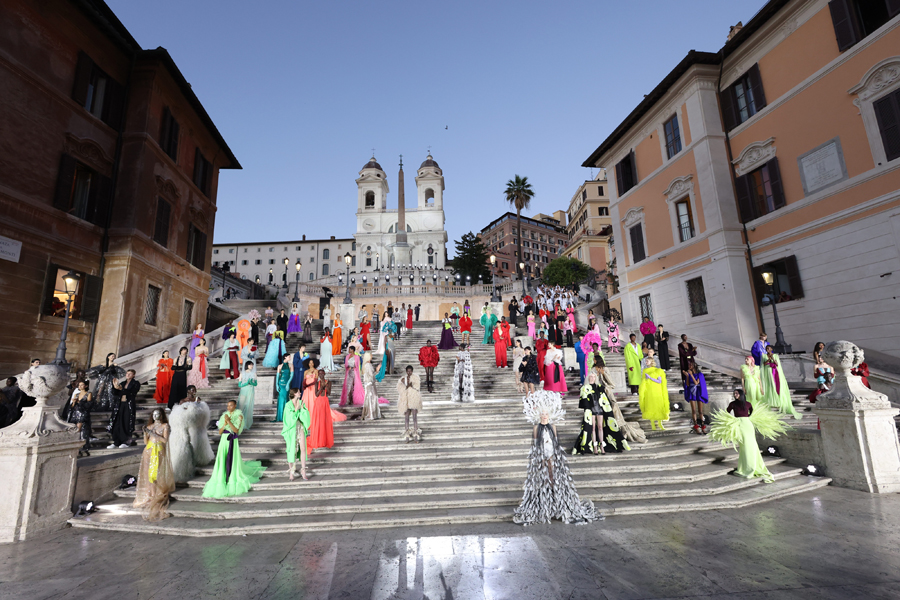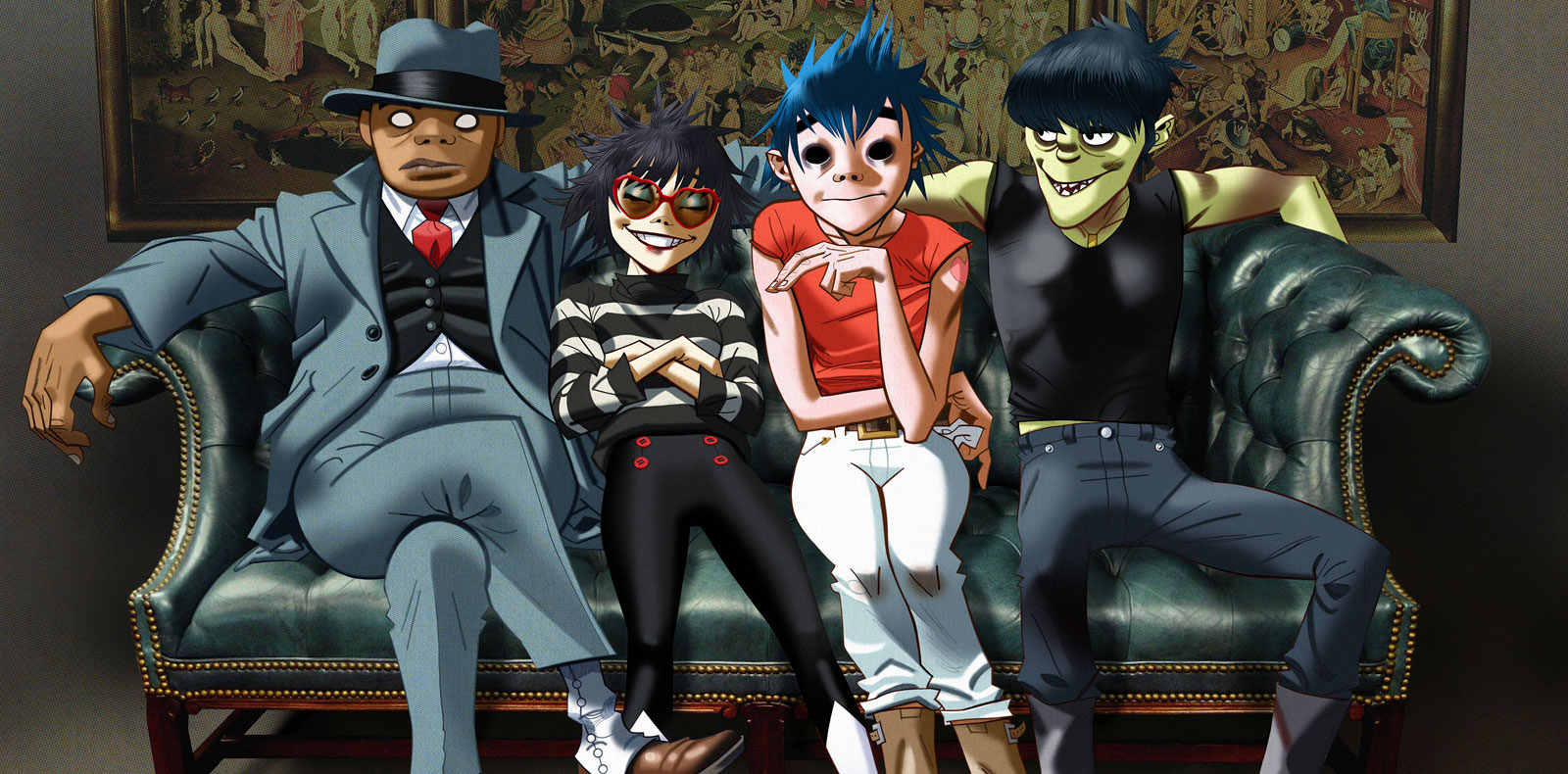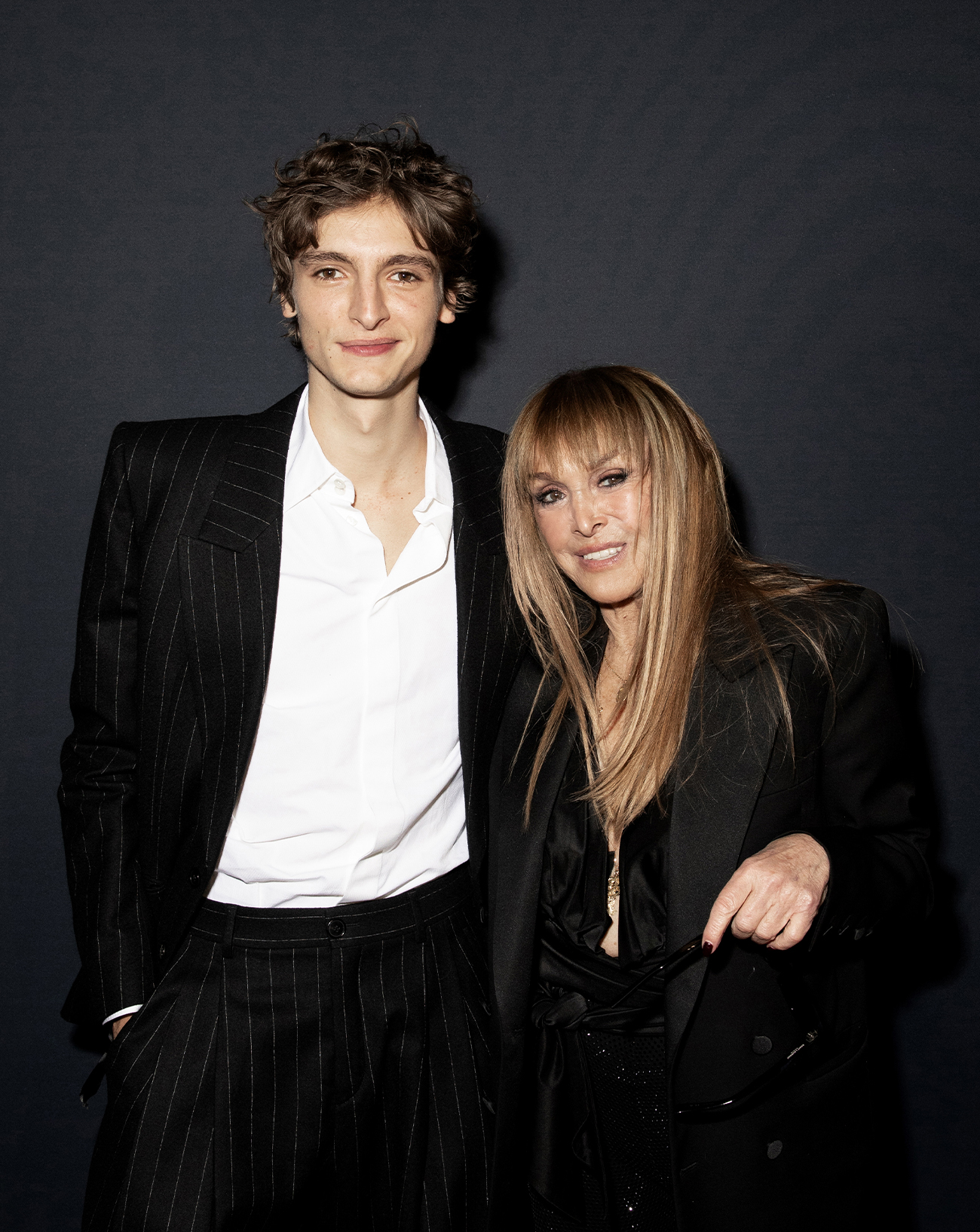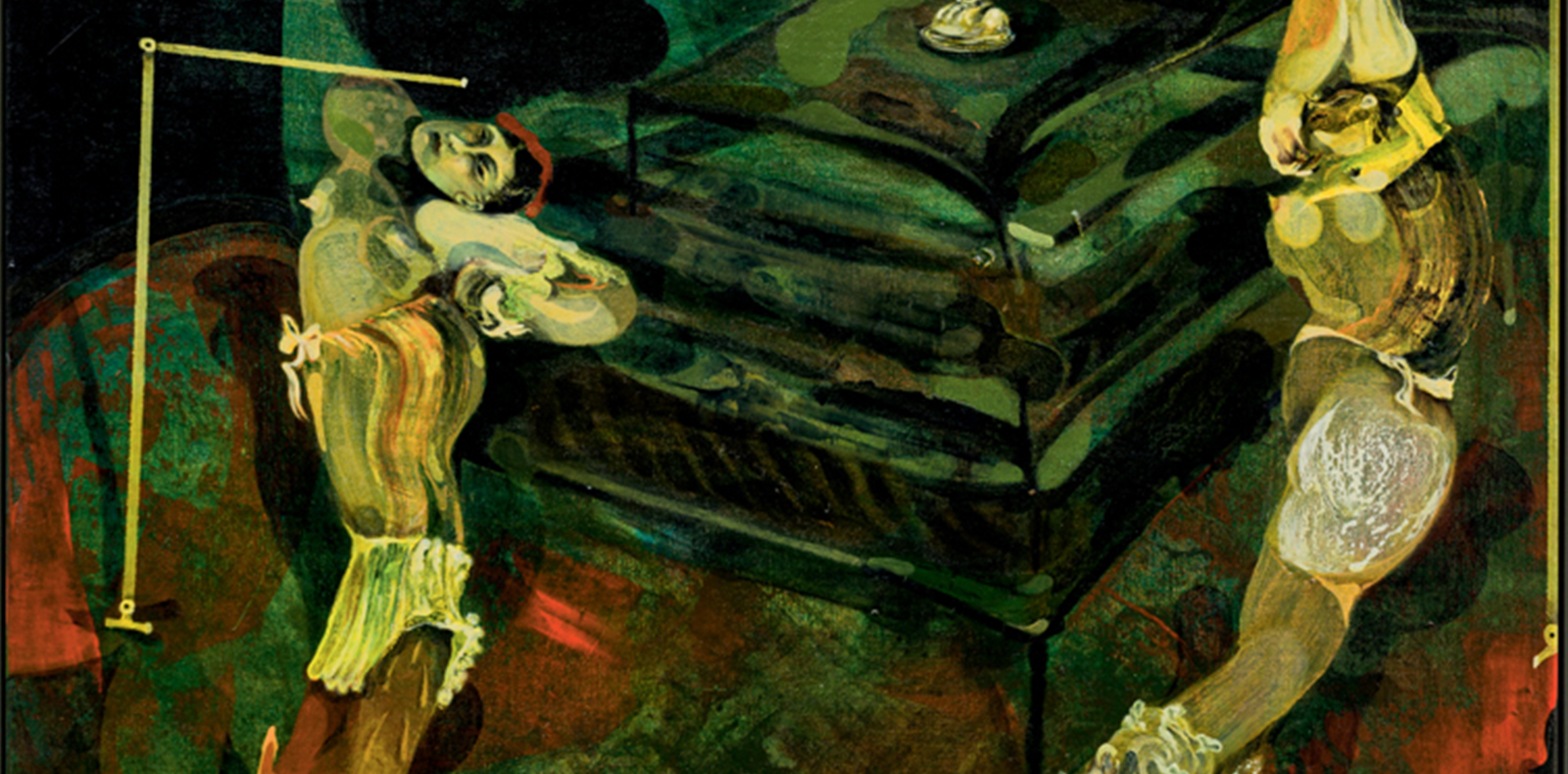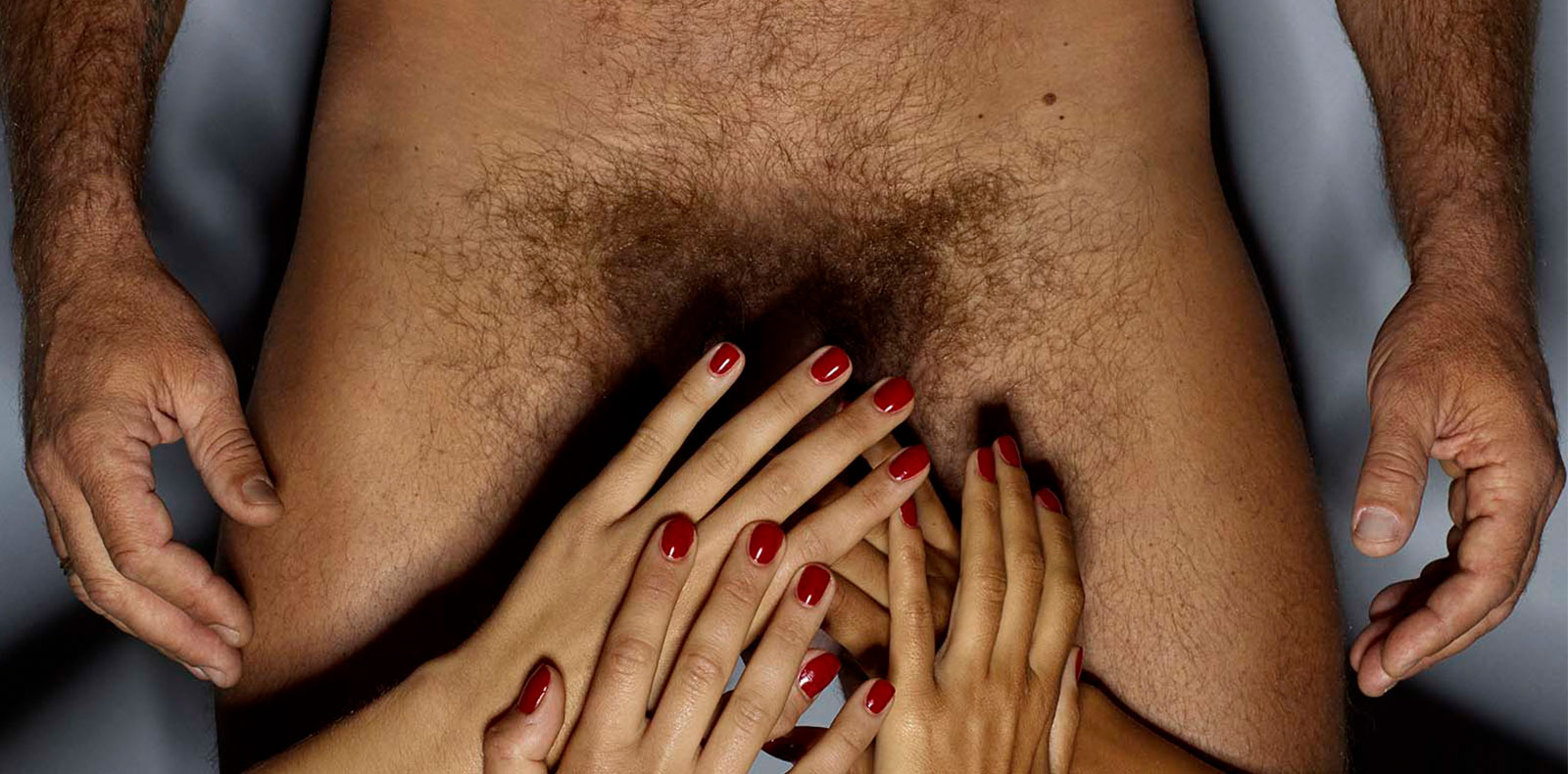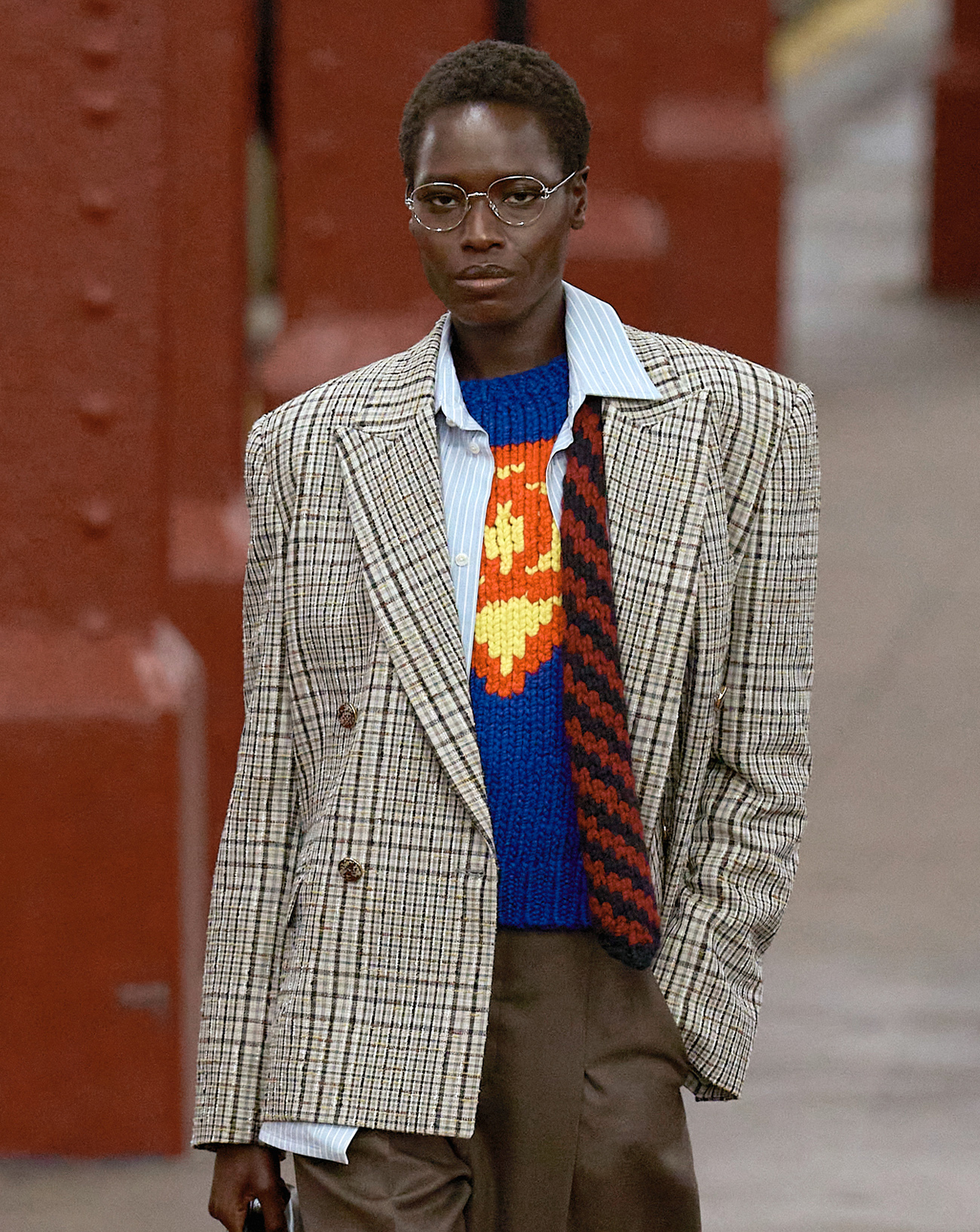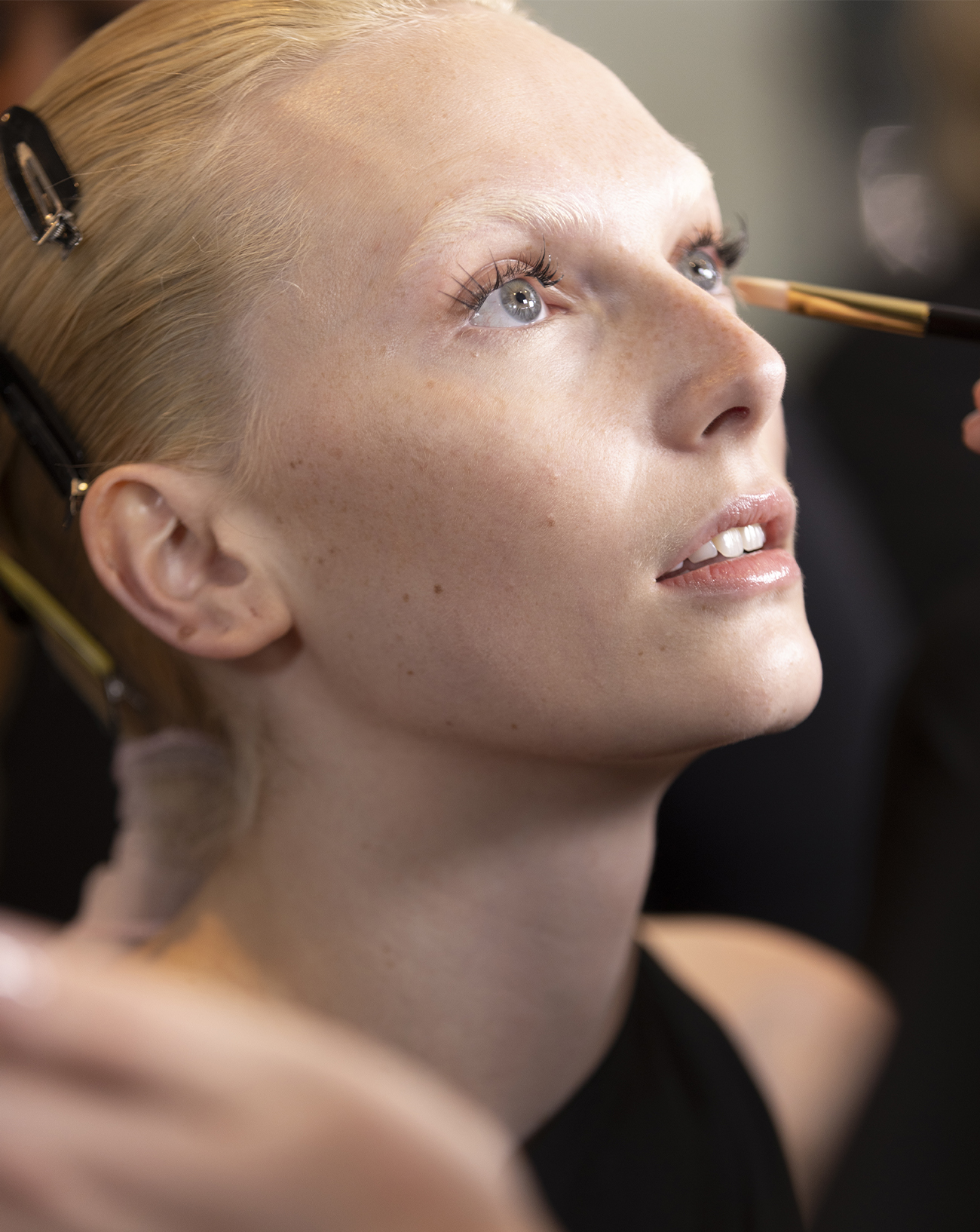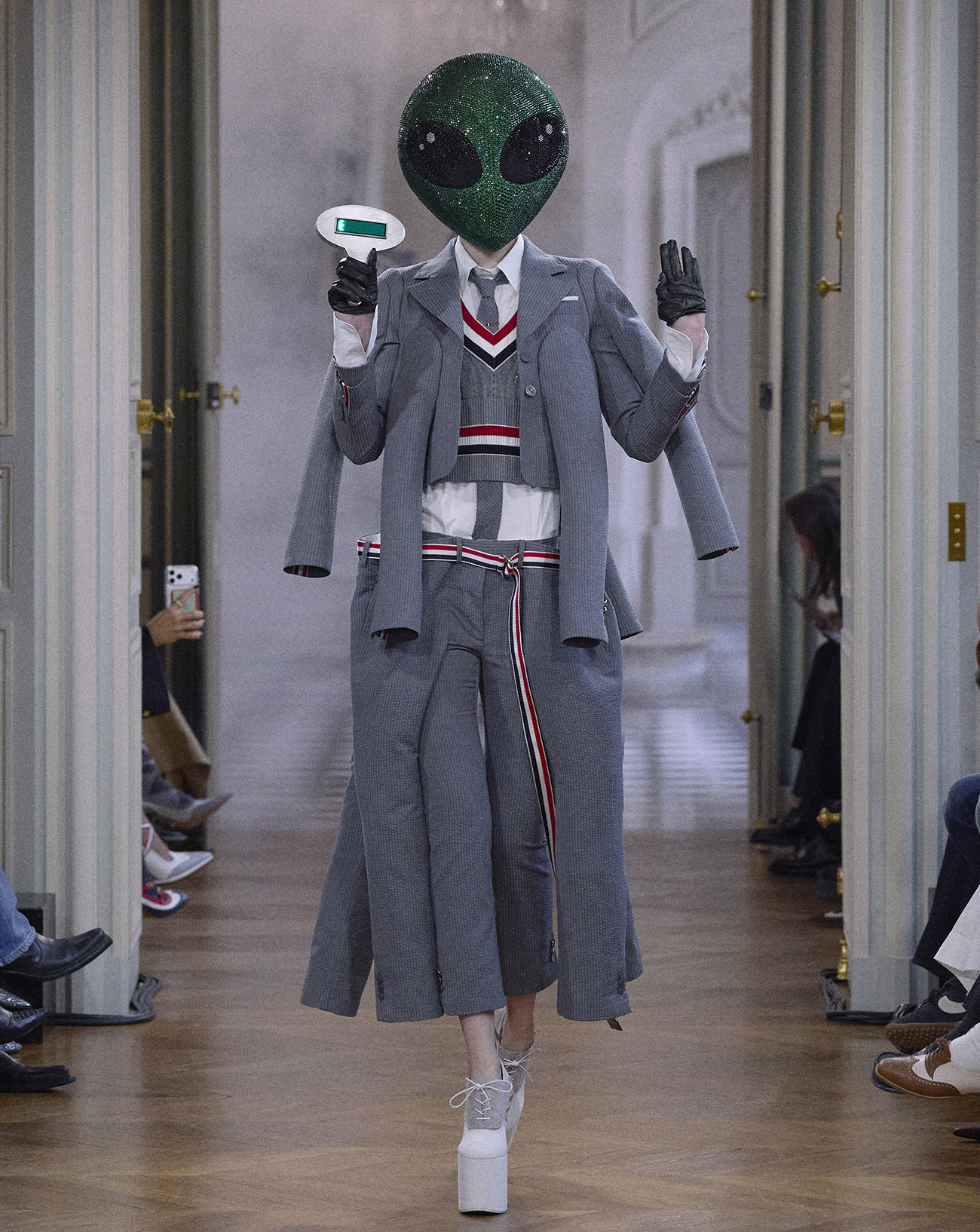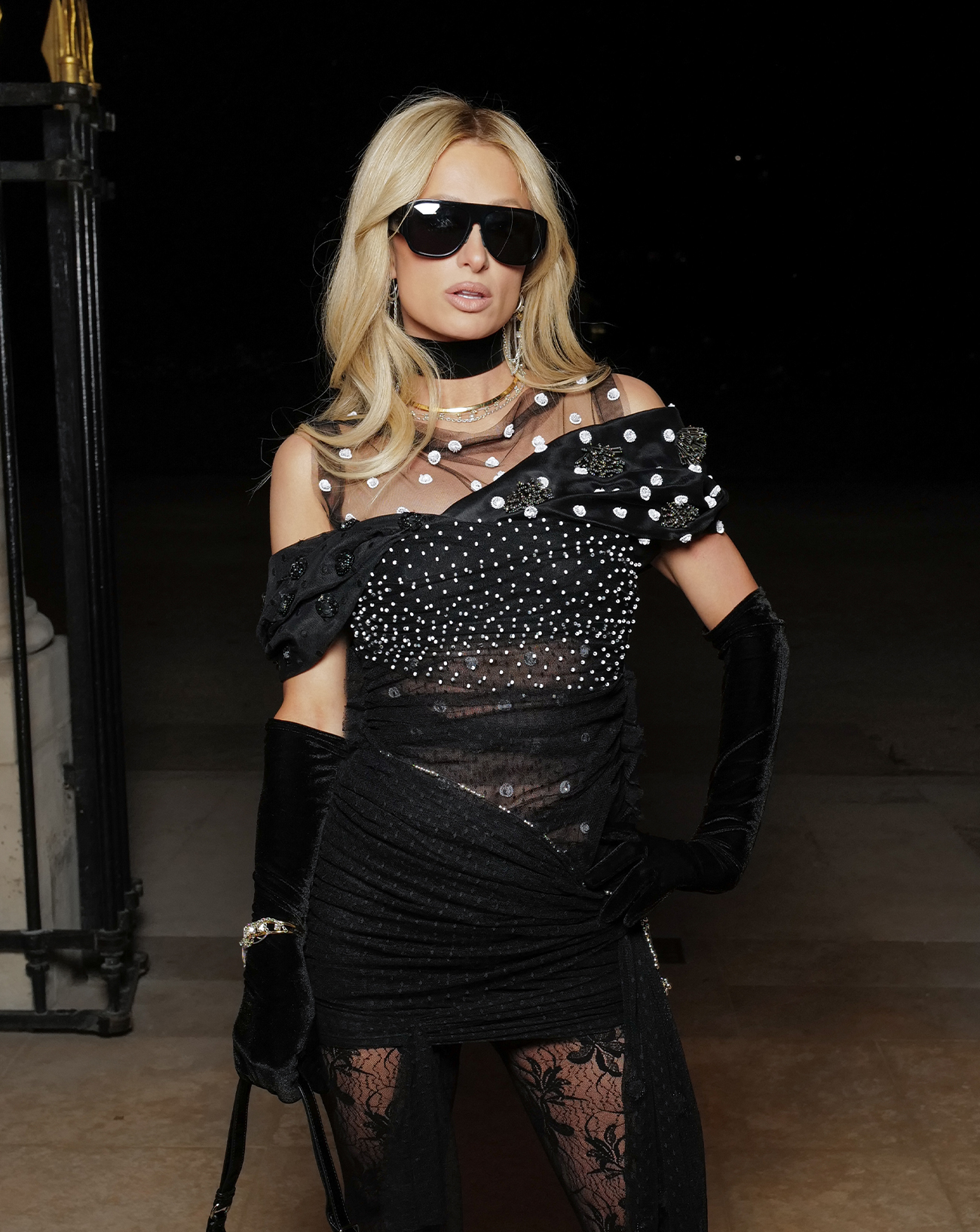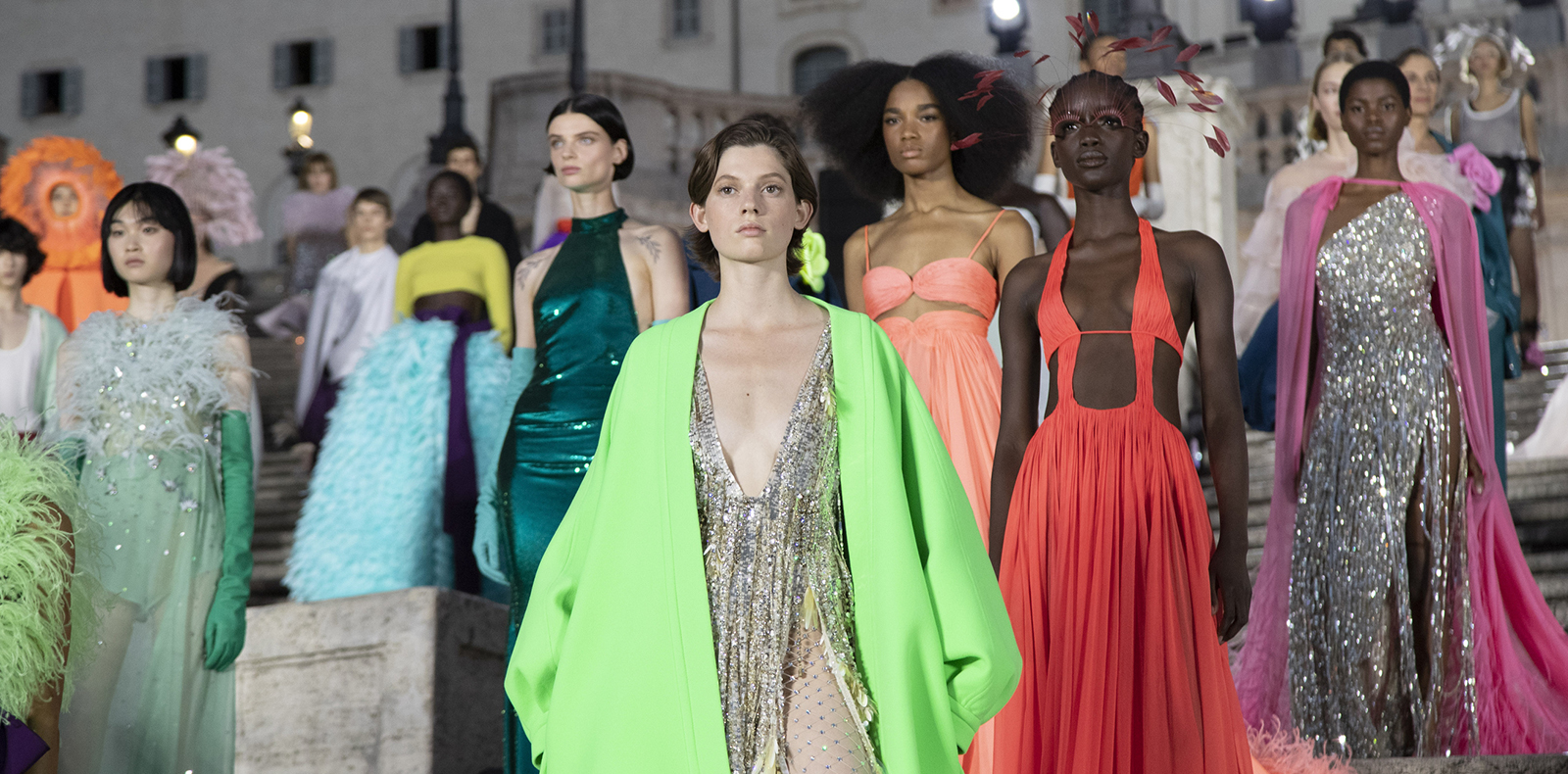
21

21
Valentino unveils its new grand couture show in an iconic square in Rome
As the sun set in Rome last Friday, July 8th, Valentino took over the Piazza di Spagna – a central square of the capital that has hosted the greatest Italian fashion shows for decades – to present its fall/winter 2022-2023 haute couture collection. Opening a dialogue with the codes and time of Mr. Valentino, with whom he used to work, creative director Pierpaolo Piccioli designed this iconic event as a celebration of the beauty born to the house’s fashion ateliers. A beauty that is both timeless and able to deeply resonate with our current times. As the models initiated their spectacular walk down the steps of the Piazza di Spagna, his message of inclusivity was clearly conveyed.
By Delphine Roche.
In the 1980s and 1990s, the National Chamber of Italian Fashion entrusted a designer with the poetic task of closing the Roman haute couture fashion week with a show open to the public on the large stairs of the Piazza di Spagna. From Naomi Campbell to Carla Bruni, an entire generation of supermodels walked down these 135 “Spanish steps” one by one, under the aegis of the chosen designer of the year. Broadcasted on the Italian national television in a program called Donne sotto le stelle [“Women under the stars”], Mr. Valentino naturally excelled in this stylistic exercise, bringing his dramatic and masterful haute couture into every Italian home through the small screen. On July 8th, Valentino creative director Pierpaolo Piccioli wanted to pay tribute to that unifying beauty moment with his show on the famous Spanish Steps. Titled “The Beginning”, the collection is based on the absolute creative power of couture to create a dialogue with the past and open perspectives for the future. “In haute couture, there is no paper pattern, no map, no trace, except from the one left deep down in the soul. Haute couture transforms itself by starting from scratch. Capturing and sharing this moment of absolute zero, where everything is still possible, is an exercise that I repeat each time with the same wonder,” he explains in the press release coming with the collection. Pierpaolo Piccioli worked for almost ten years under the supervision of Mr. Valentino himself and designed this iconic collection as a dialogue with the maestro. “This is a deeply personal collection,” he continues, “a conversation with Mr. Valentino, with the man I knew, with the proportions of his creations, with his volumes. As a child, I used to take the train to watch the show on the steps of Piazza di Spagna. Knowing the past allows us to envision the future. Yet couture is a ritual that remains unchanging. The atelier always remains its heart. Yet the people walking the runway are not really the same as those in the past, and that is modern.”
Following the 1990s and supermodels like Linda Evangelista, or Naomi, who by the way was in the audience at the show, a new cast displaying a diversity of origins, ages, gender expressions, and body types took over the steps. A former Olympic swimmer with amazing charisma, a boy with long pink hair wearing an acid yellow ruched organza gown, the 80s supermodel Violetta Sanchez, several plus-size models in sculptural mermaid gowns… as well as a large number of male models. For Pierpaolo Piccioli, this cast is a political statement per se. “Beauty has the power to convey messages,” he continues, before adding: “I sincerely believe that fashion should be political. Today, having 40 black models, boys and girls, walk on the steps of the Piazza di Spagna is sending a big ‘no’ to Matteo Salvini and Giorgia Meloni [two prominent figures of the Italian far right, respectively leaders of The Northern League and Brothers of Italy].”
For Pierpaolo Piccioli, couture does not have to try hard to be modern. In fact, while it has once been declared dying, it is now alive and kicking with a new generation of customers whose codes are different and more in tune with contemporary attitudes and values. Actually, it is thanks to its unapologetic splendor, its beauty, and the long meticulous hours of work of its workers, that Valentino’s couture manages to be modern without hammering that message home. Addressed to both men and women, it relies on the very Roman value of timelessness regarding embroidery, ruched and laminated fabrics, as well as dresses with trains. Like the house’s creative director, one must be a fine colorist, a master technician, and be completely in tune with today’s fashion in order to know how to use embellishments, experimentations, and theatricality, that are the hallmark of couture, to serve some kind of contemporary casualness. For instance, matching a T-shirt-like crop top with a feather skirt, or a long cape with puffed sleeves with a simple white tank top and trainers (worn by a boy). Fluidity and lightness are always required thanks to the breathtaking intense and contrasting colors, and to a specific work on volumes: “I wanted to work on embroideries and materials in a very free way,” Pierpaolo Piccioli asserts. “Regarding volumes, I pictured liquid drops falling slowly to the ground.”
In this collection designed as a dialogue with Mr. Valentino, one cannot possibly miss the red color, the true signature of the house, whose archives list no less than 550 shades of red. Another signature pattern is the rose, which the house’s founder considered to be a token of “timelessness, culture, and persistence of beauty”. Oversized to the extreme on their first appearance during the show, roses are stitched into necklaces and buttonholes, or printed throughout the collection, and always “more daring, more assertive, less romantic” than the maestro’s ones. That way, they contribute to making this collection, designed as an eternal beginning, a celebration of beauty in what it holds in terms of heritages drawn from the past and potential infinite symbolic reinvestments. The famous ateliers’ workers were also able to take part of this celebration, appearing alongside the creative director in a moving finale.






